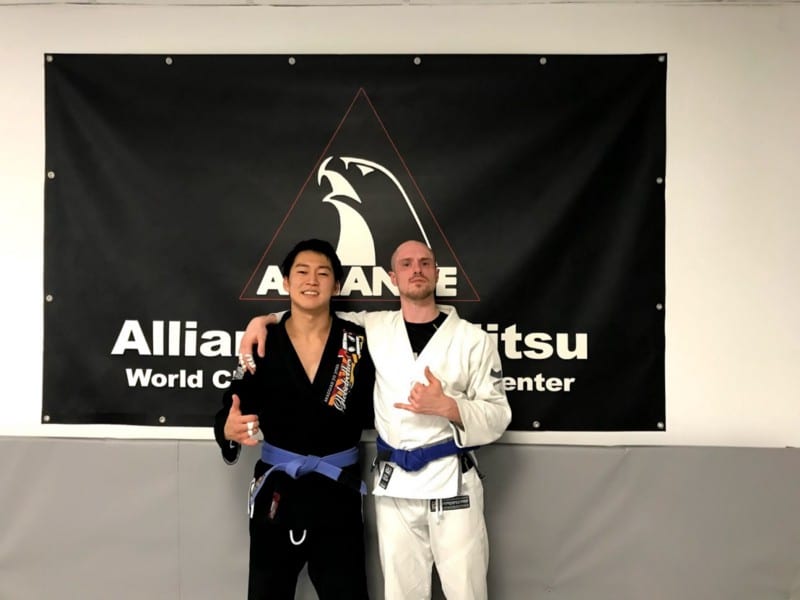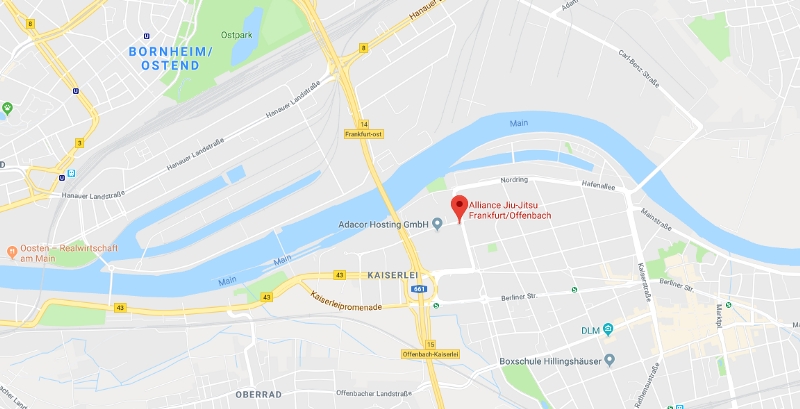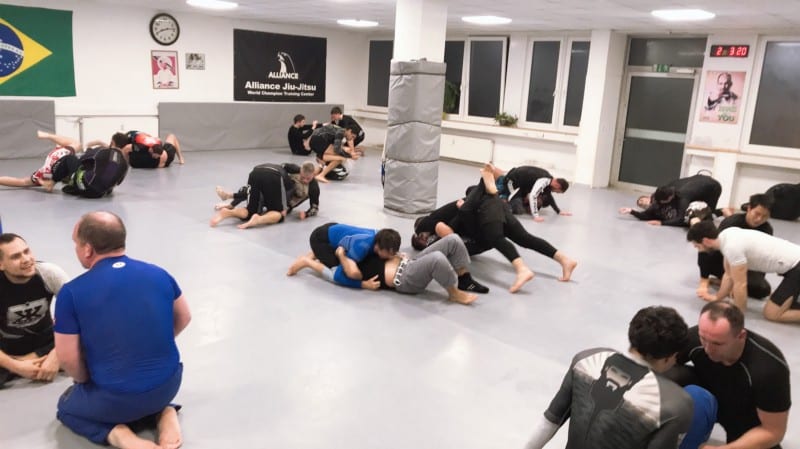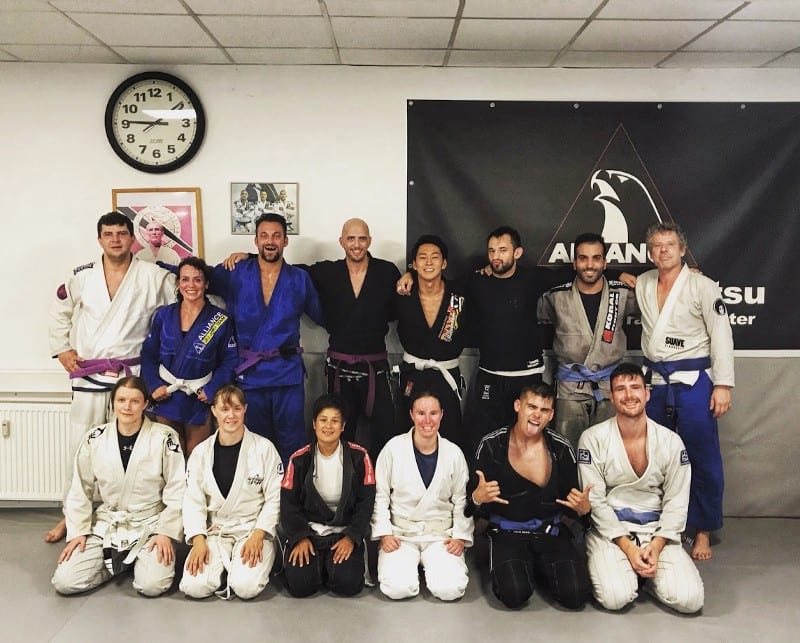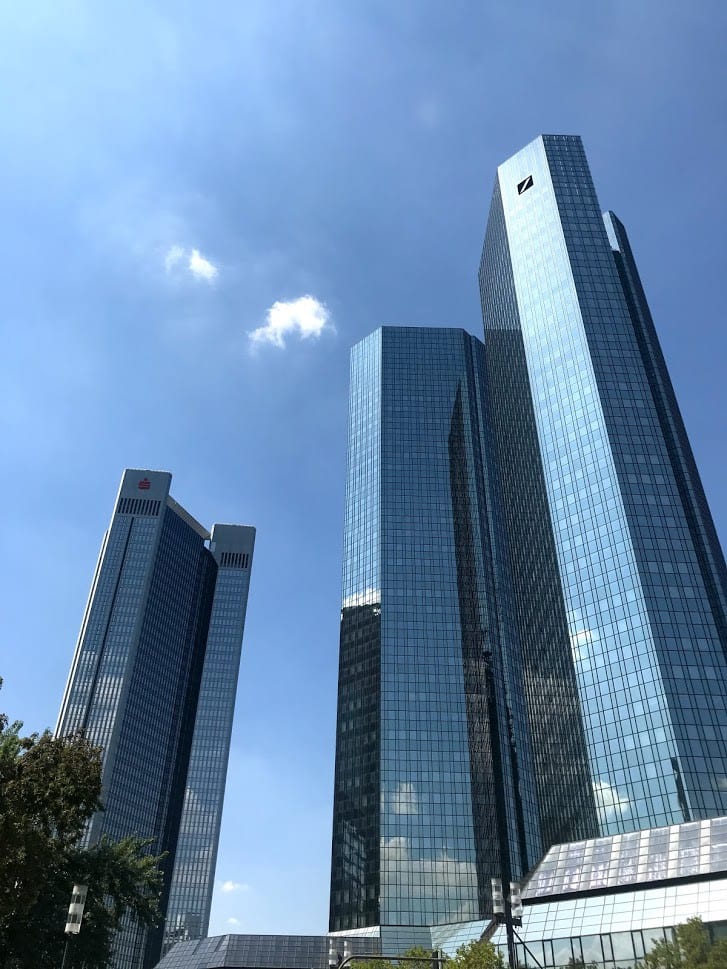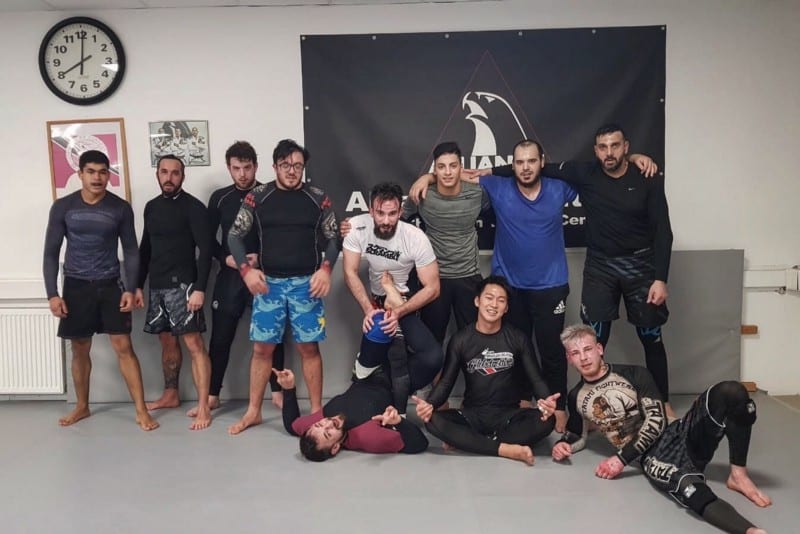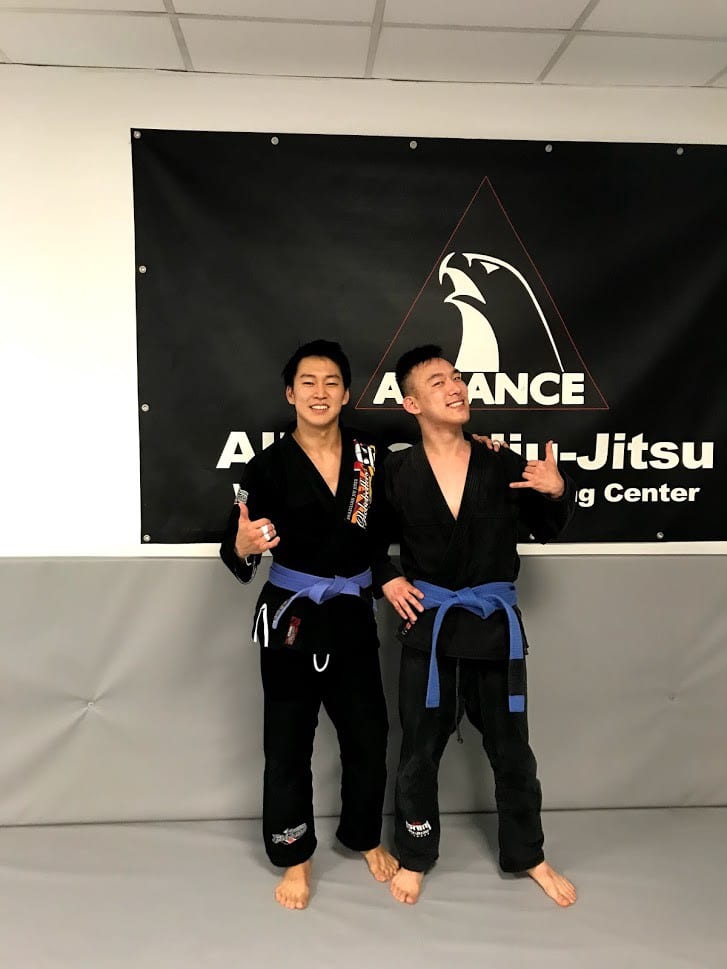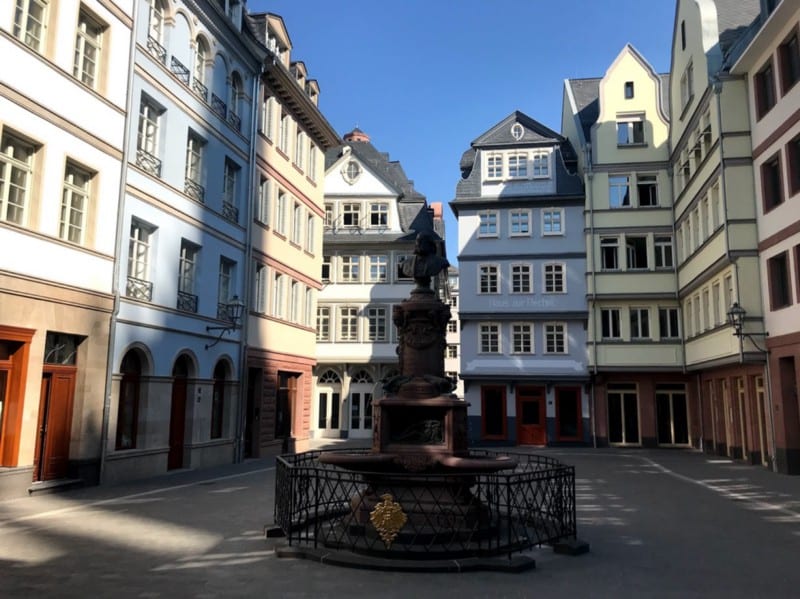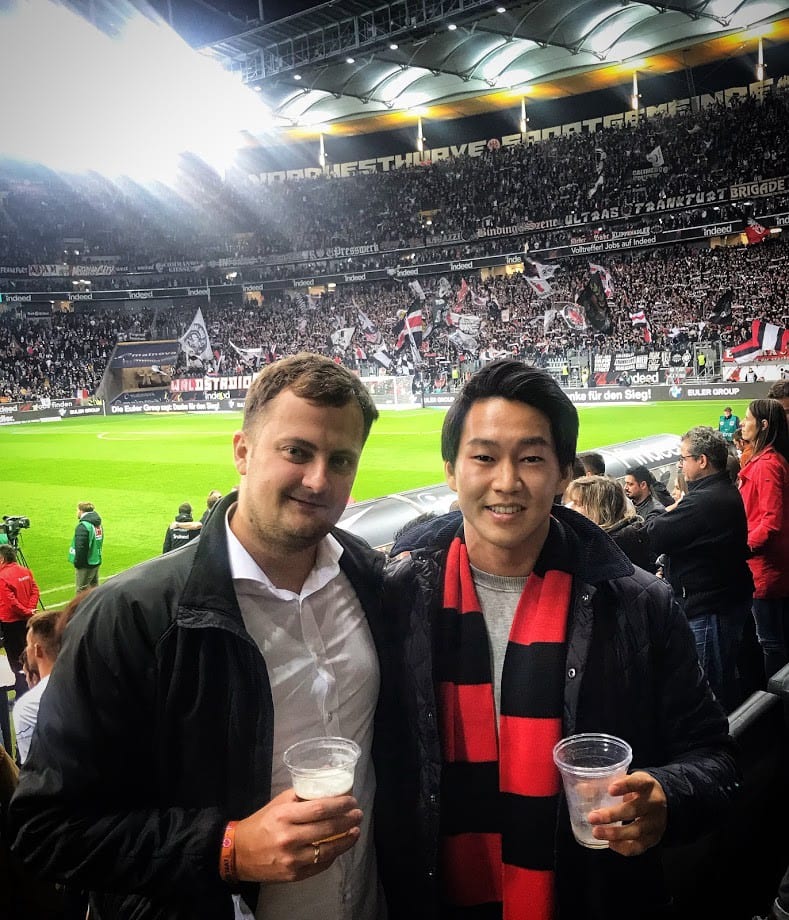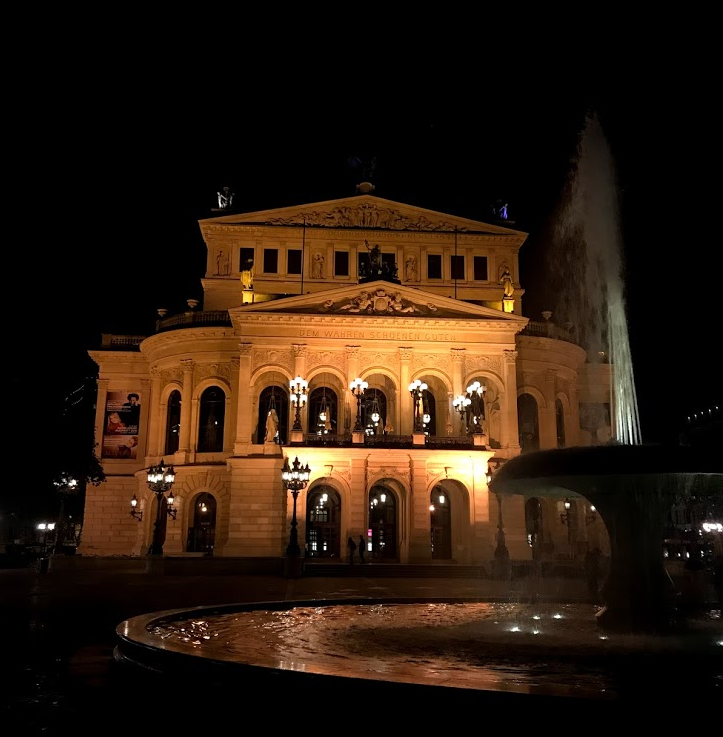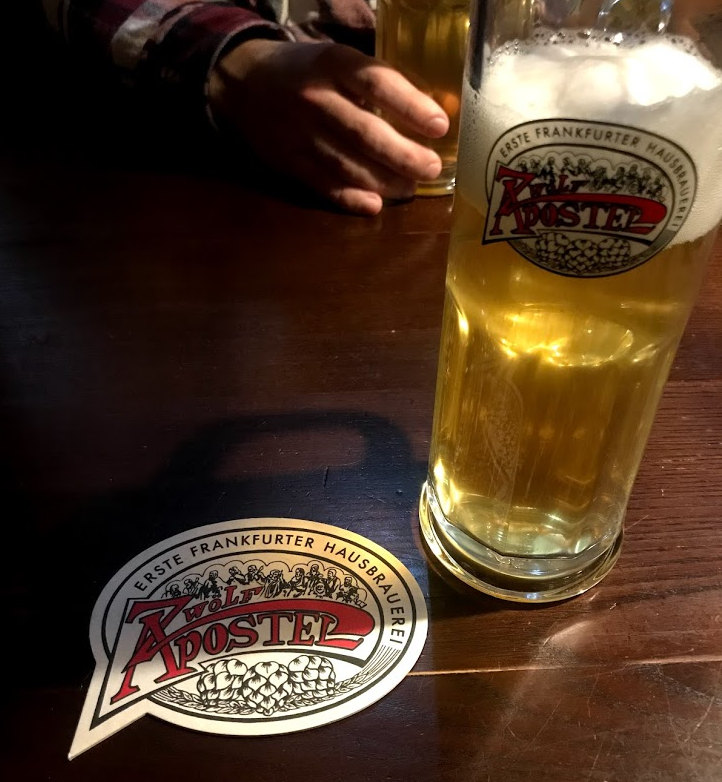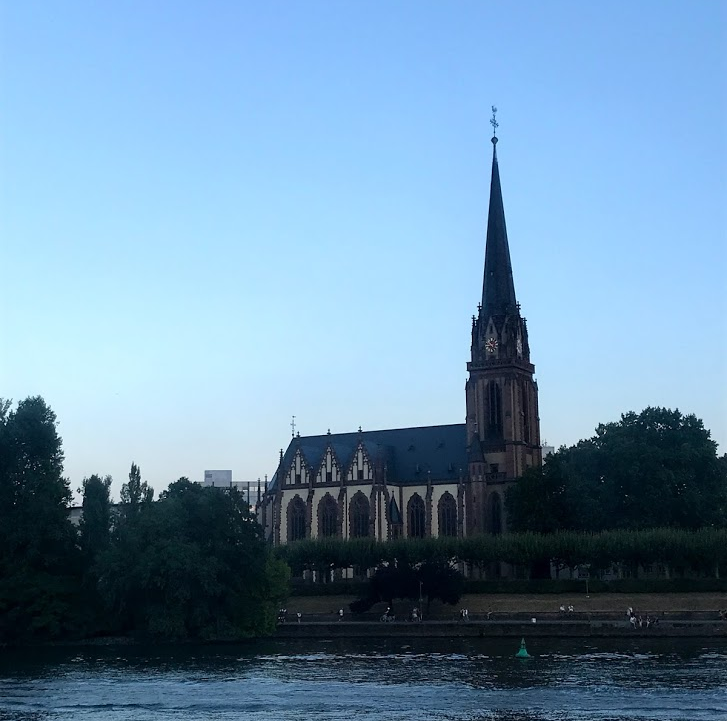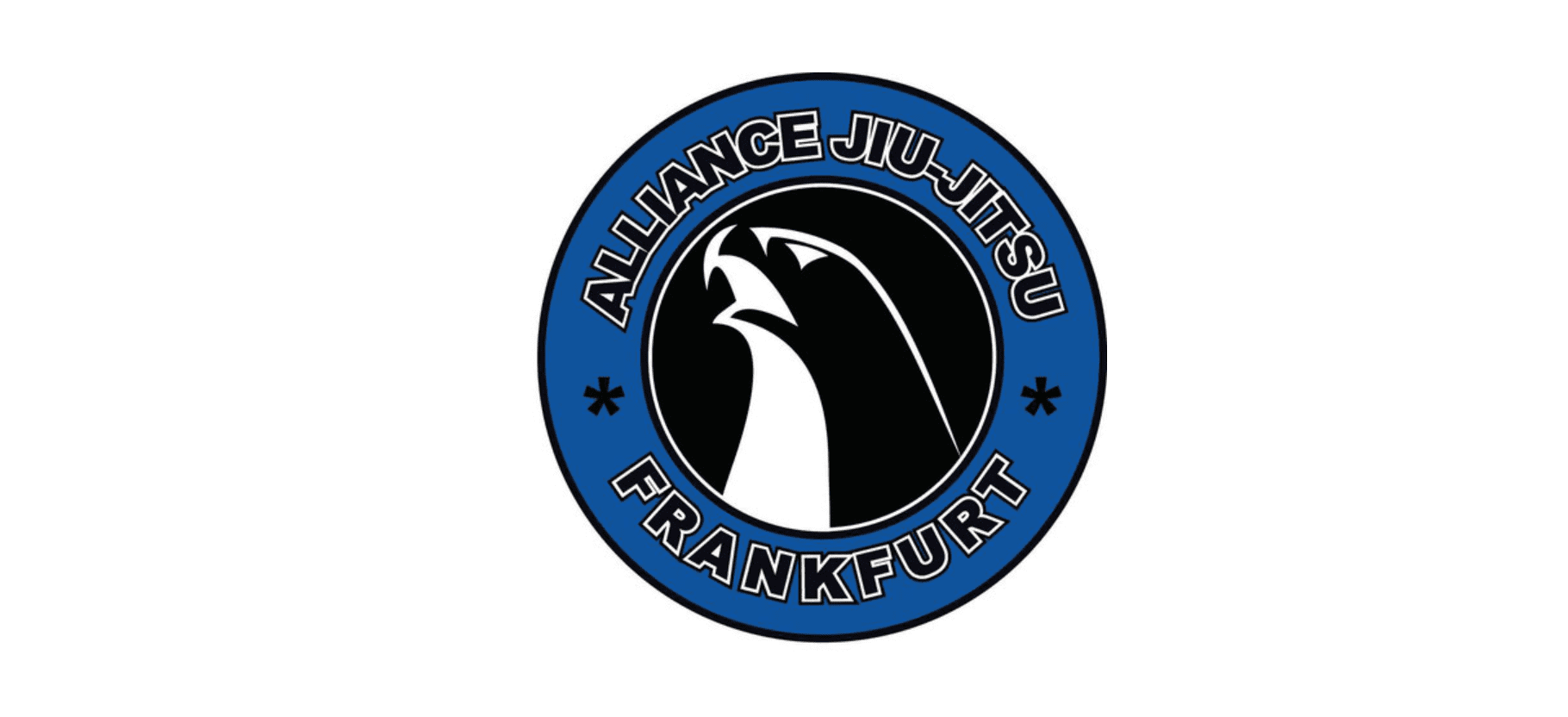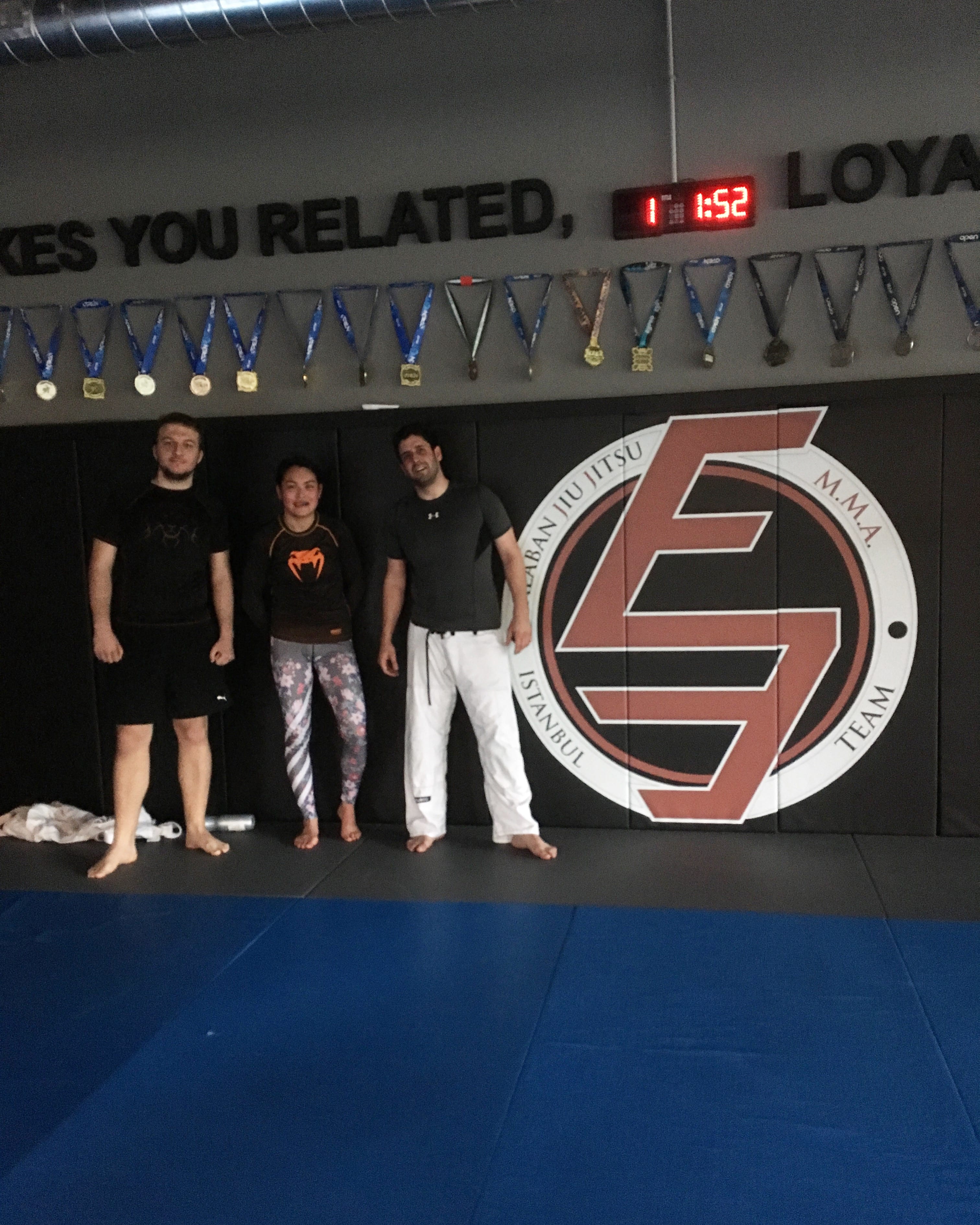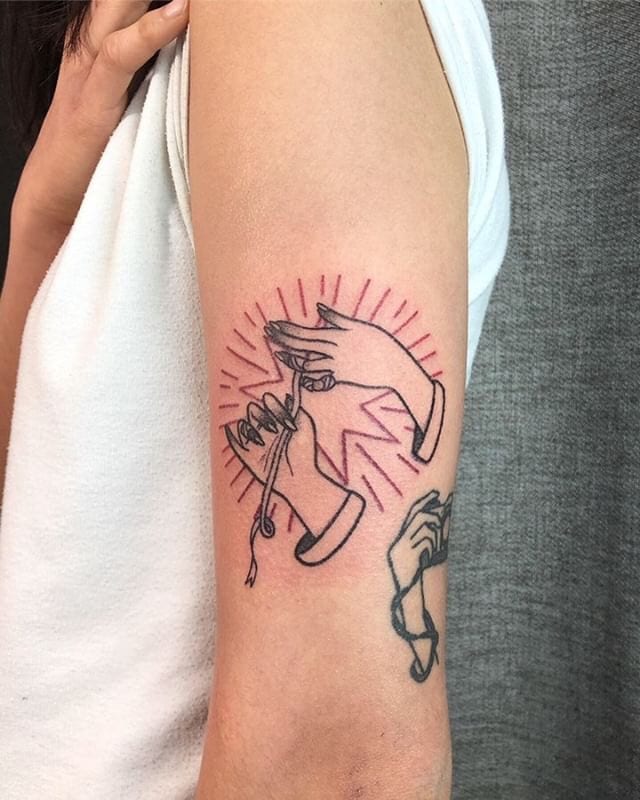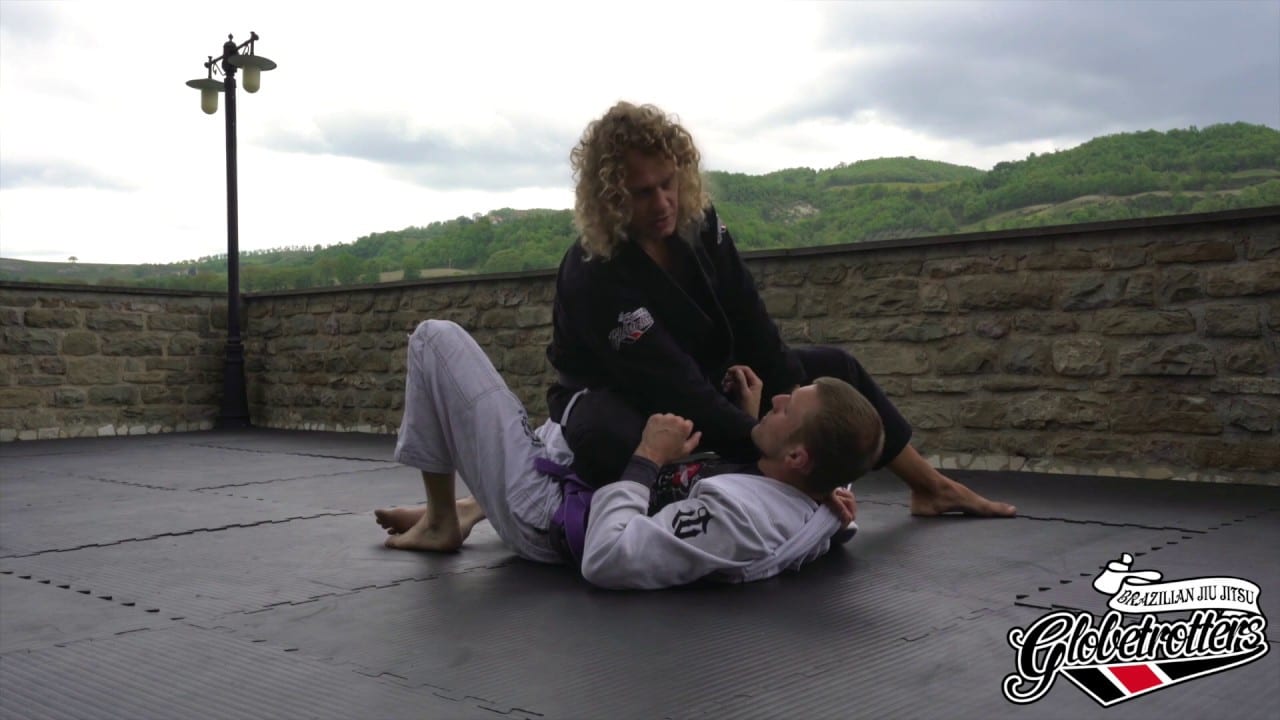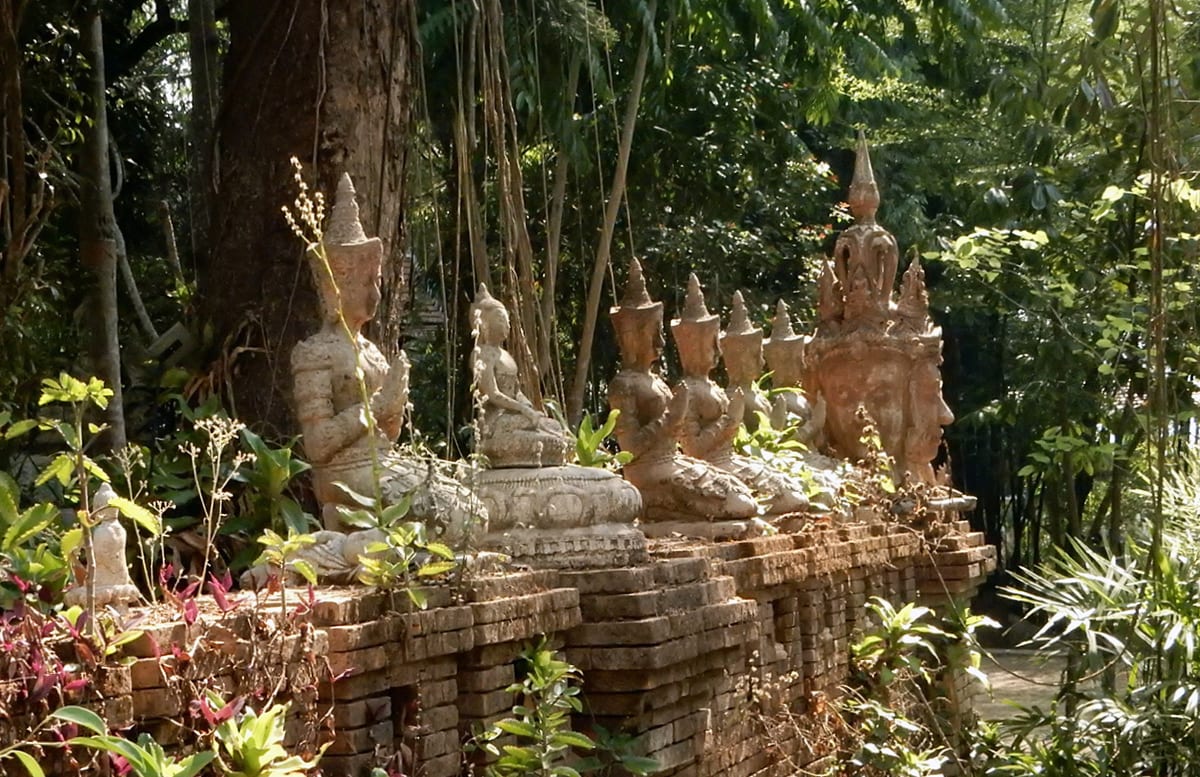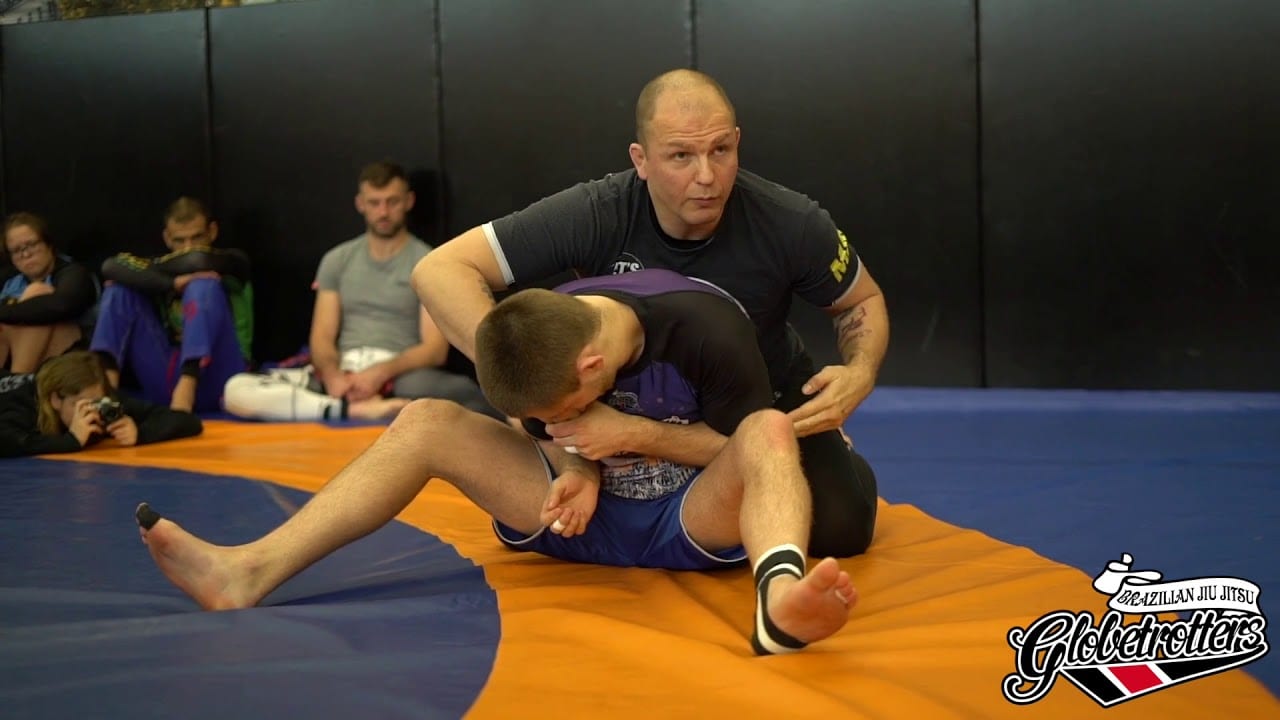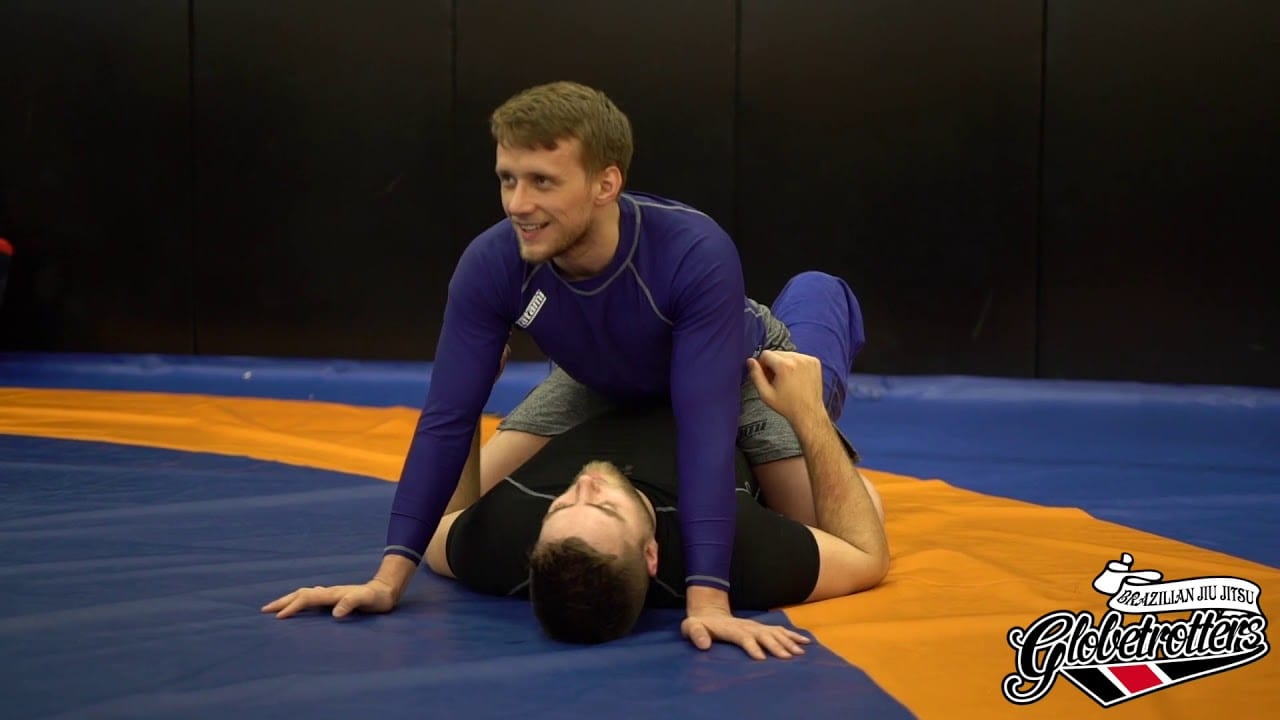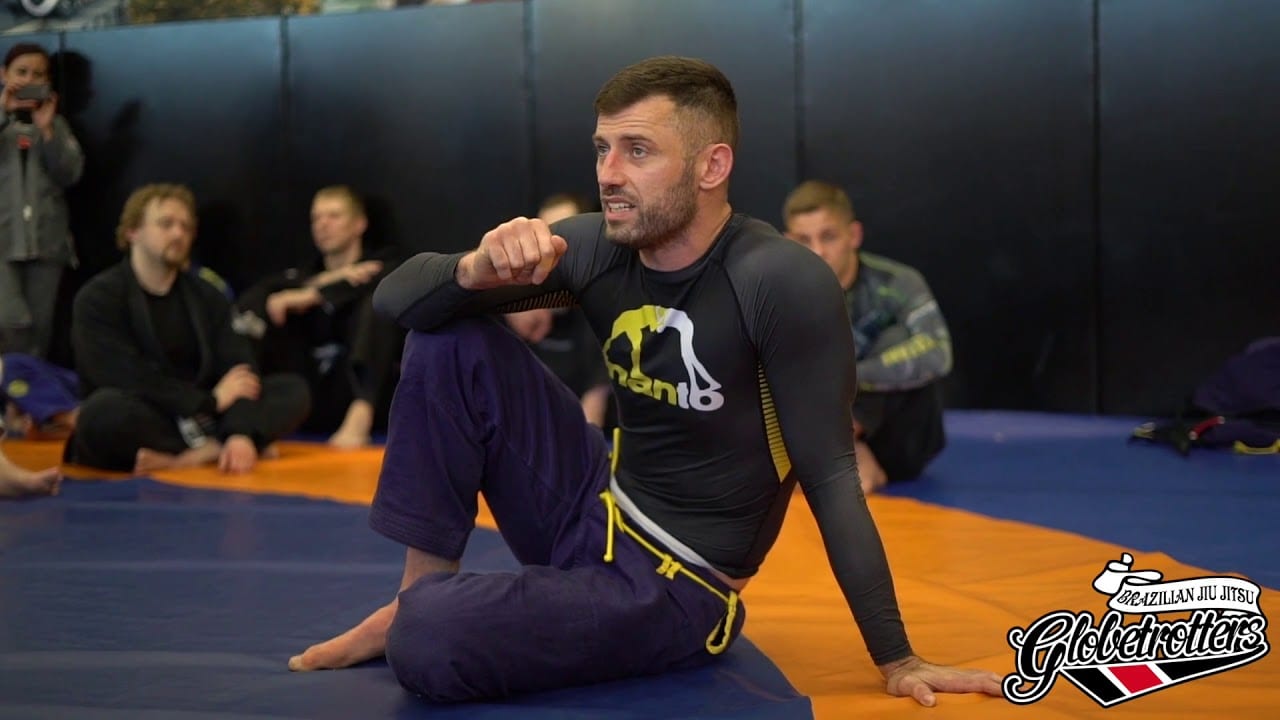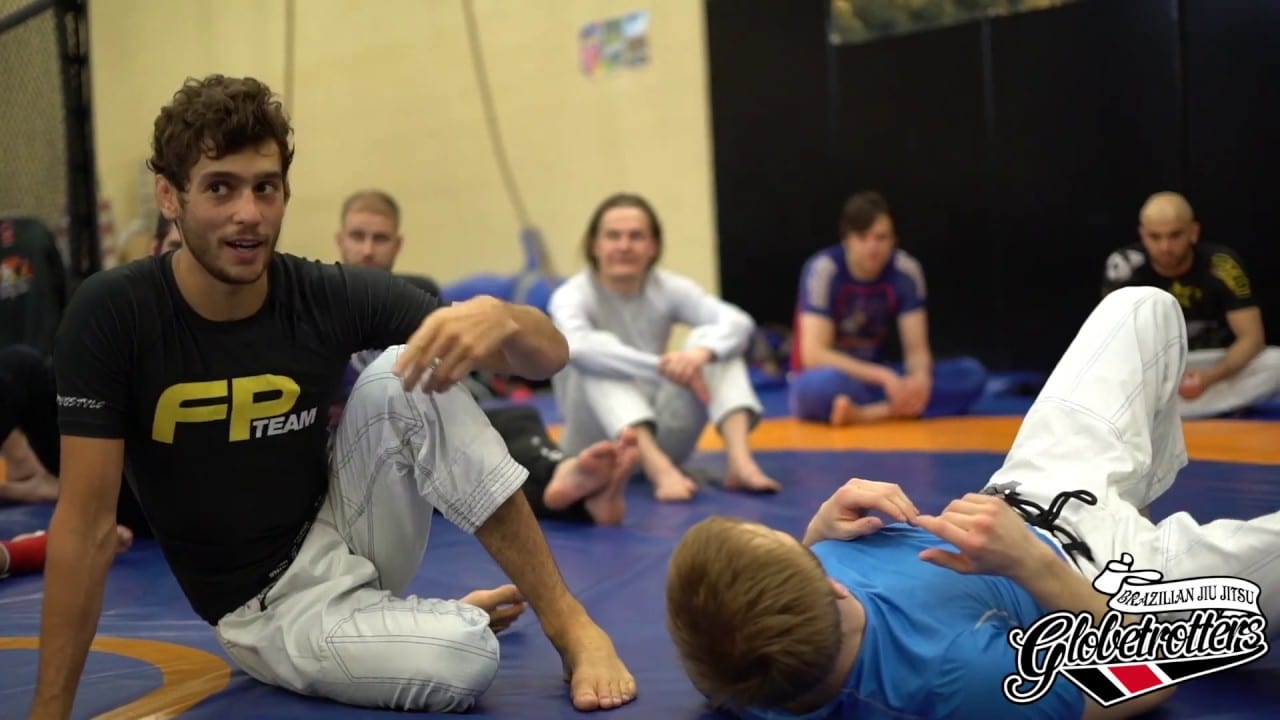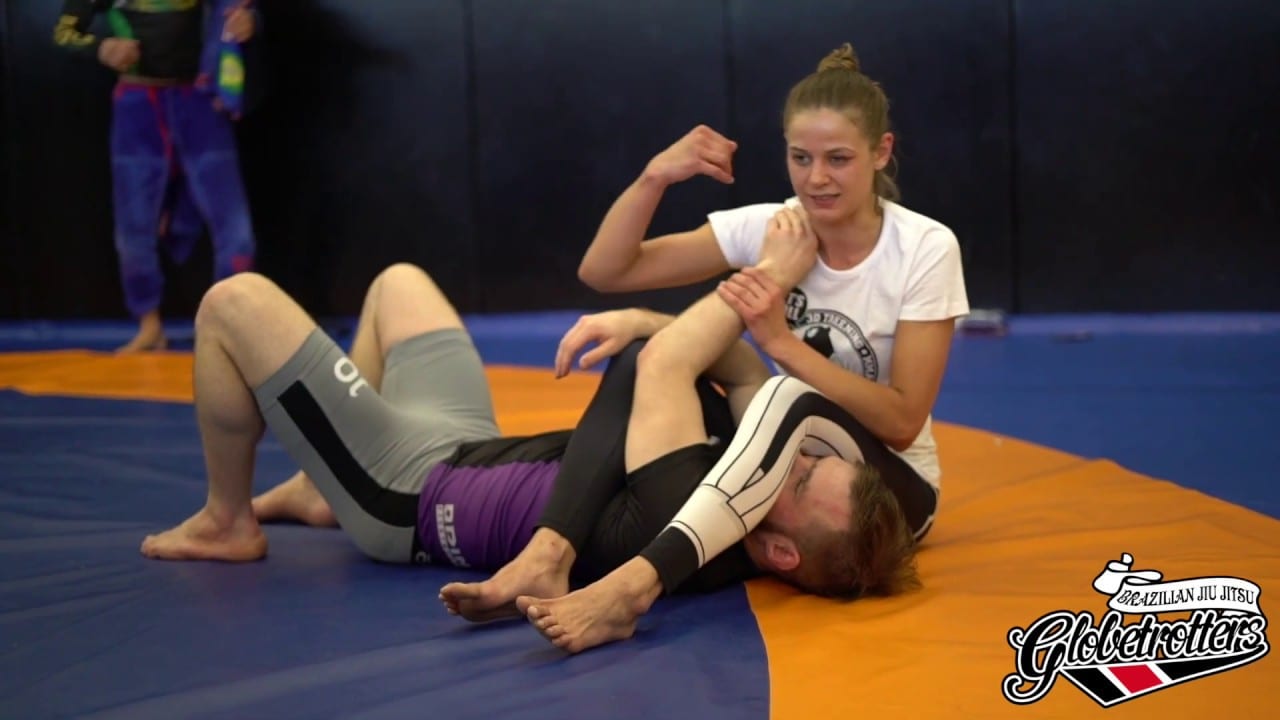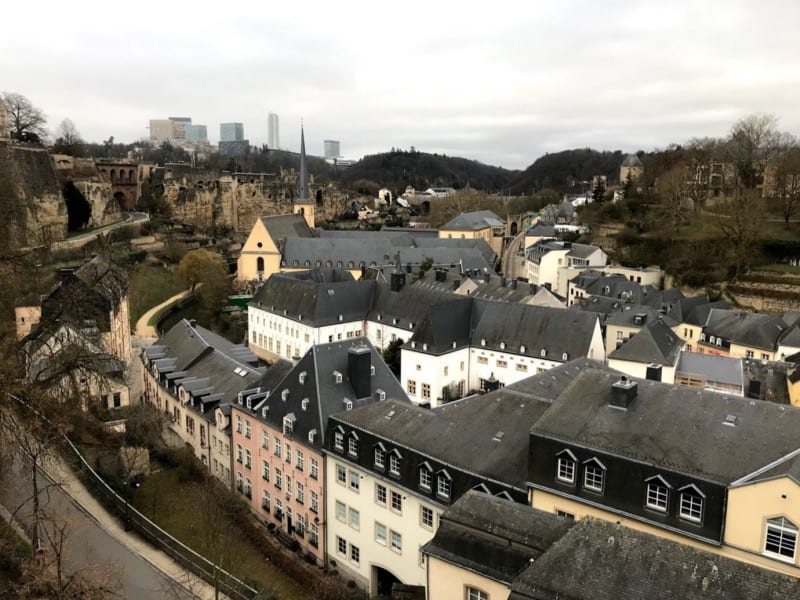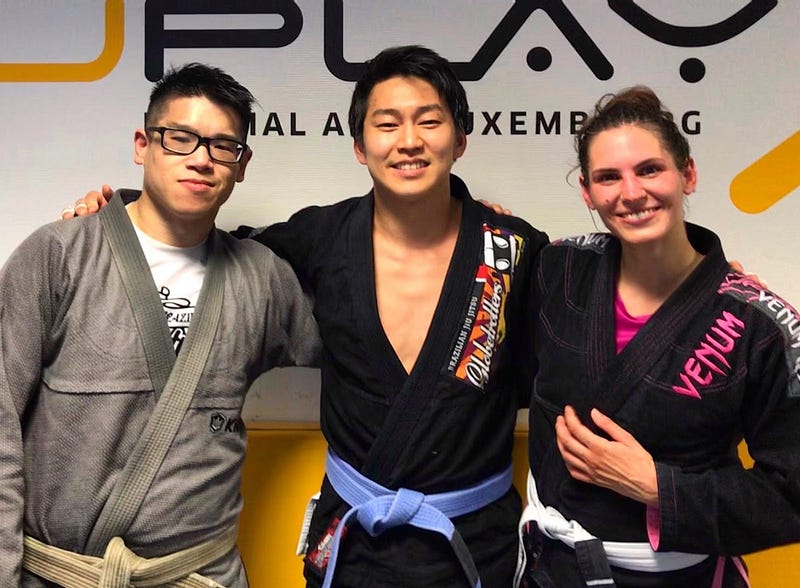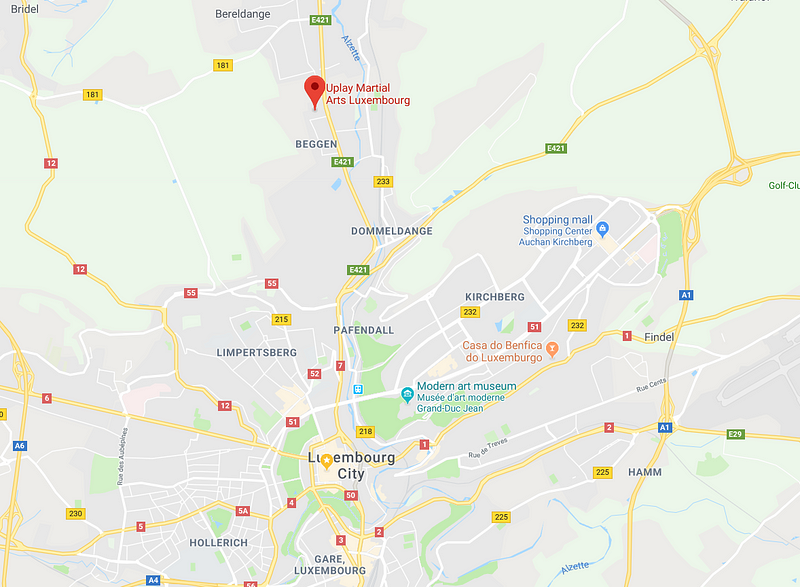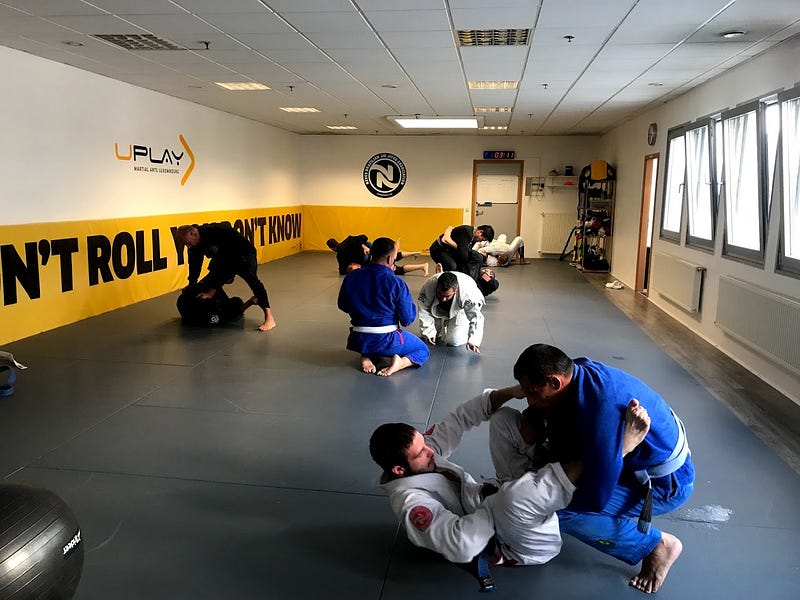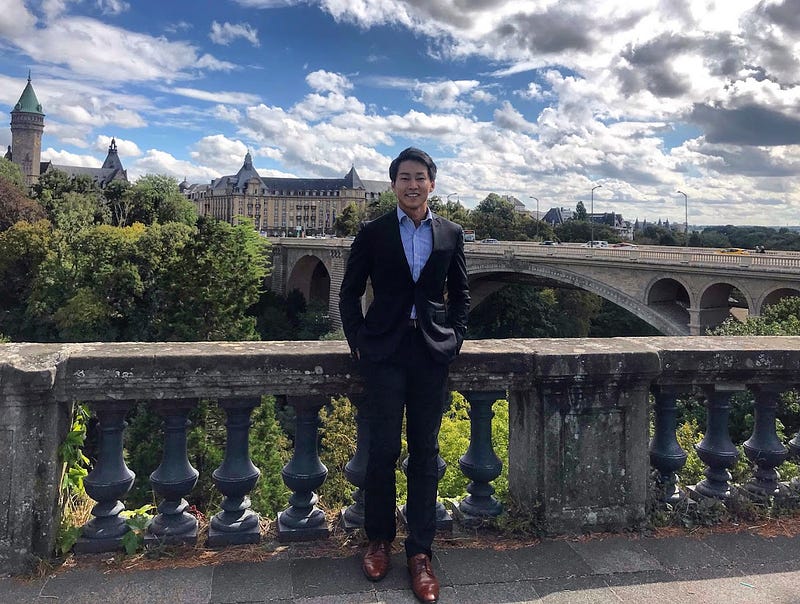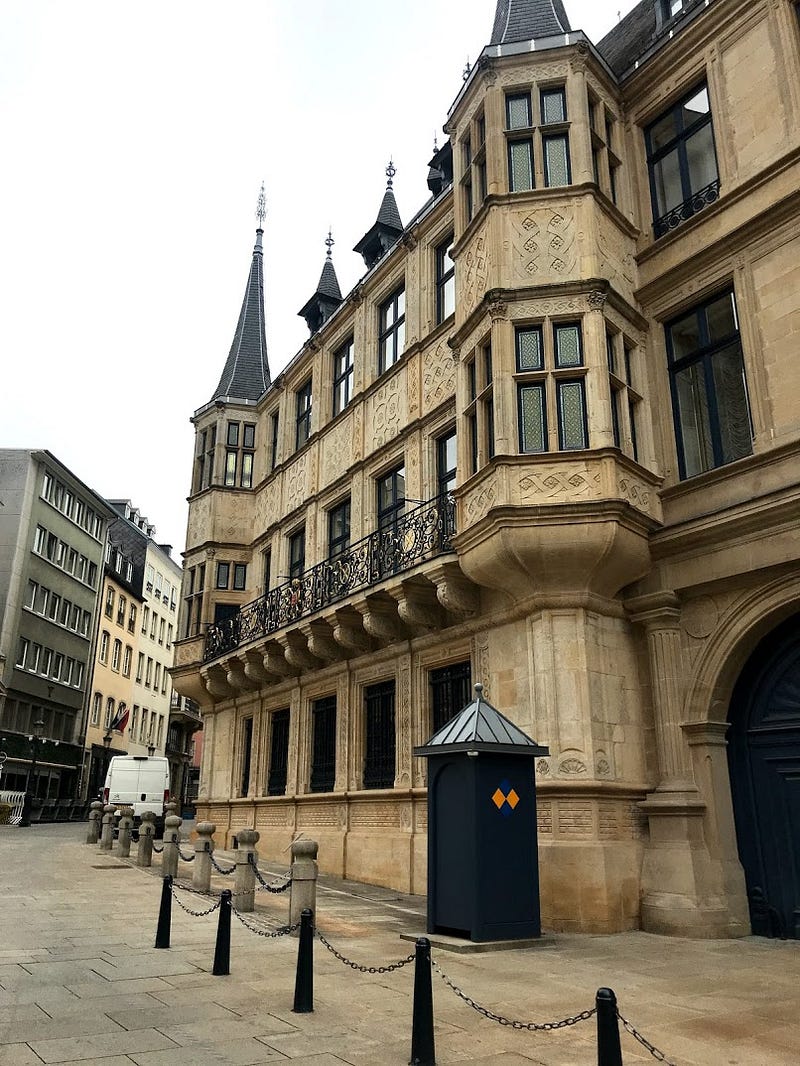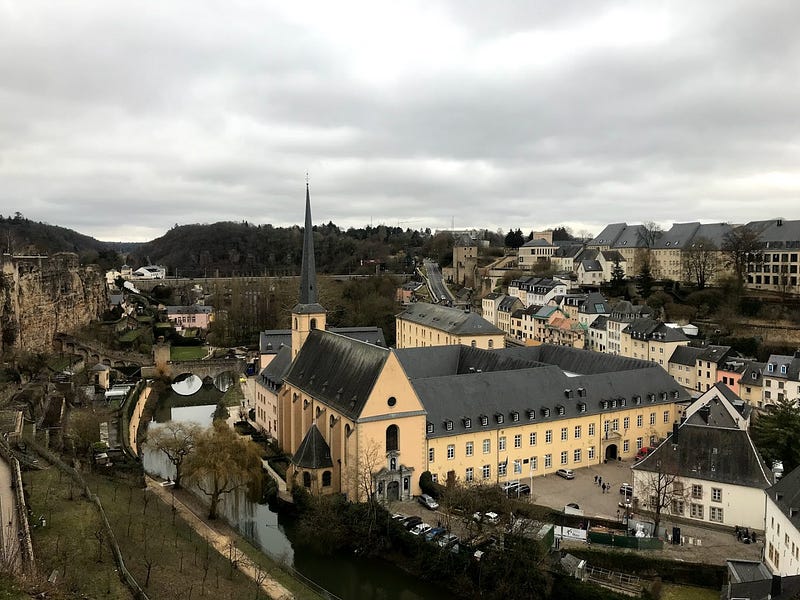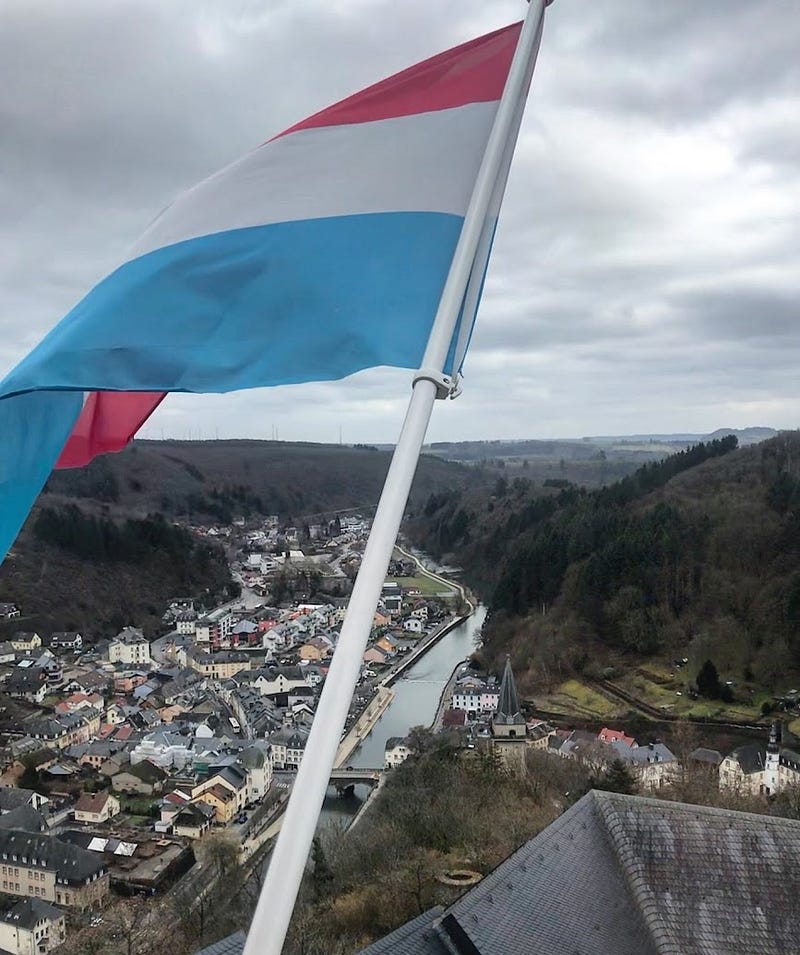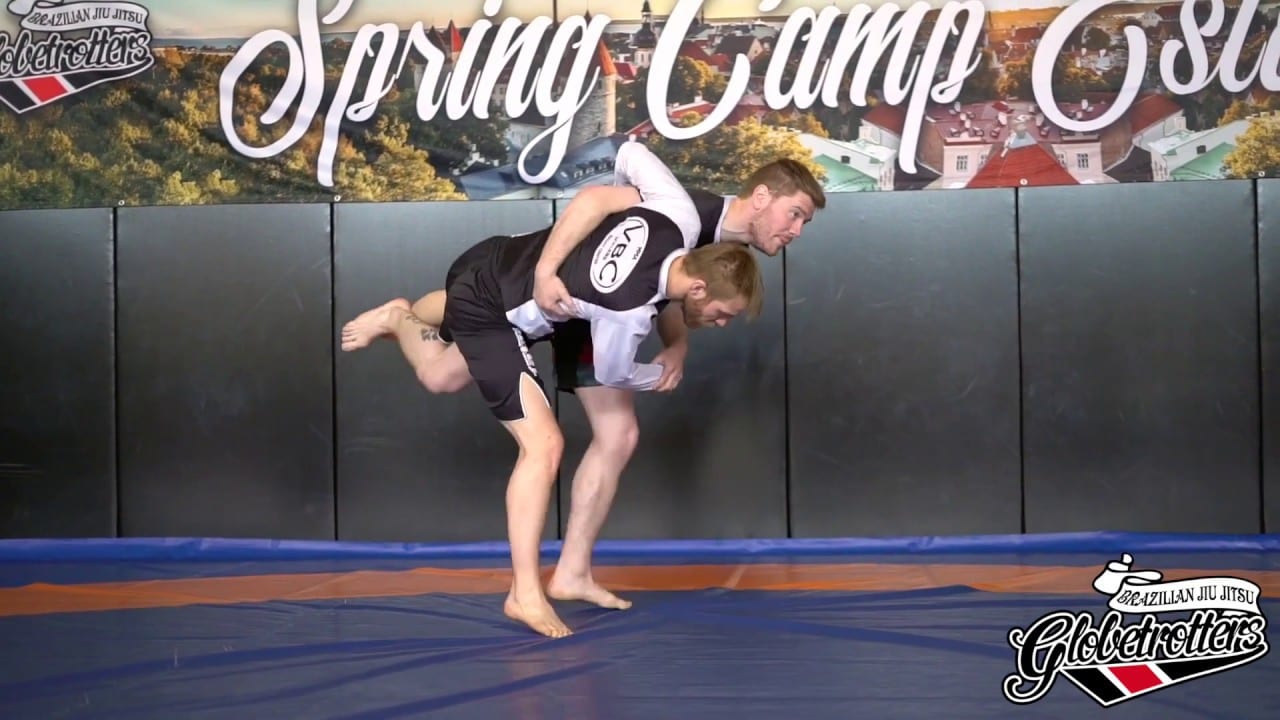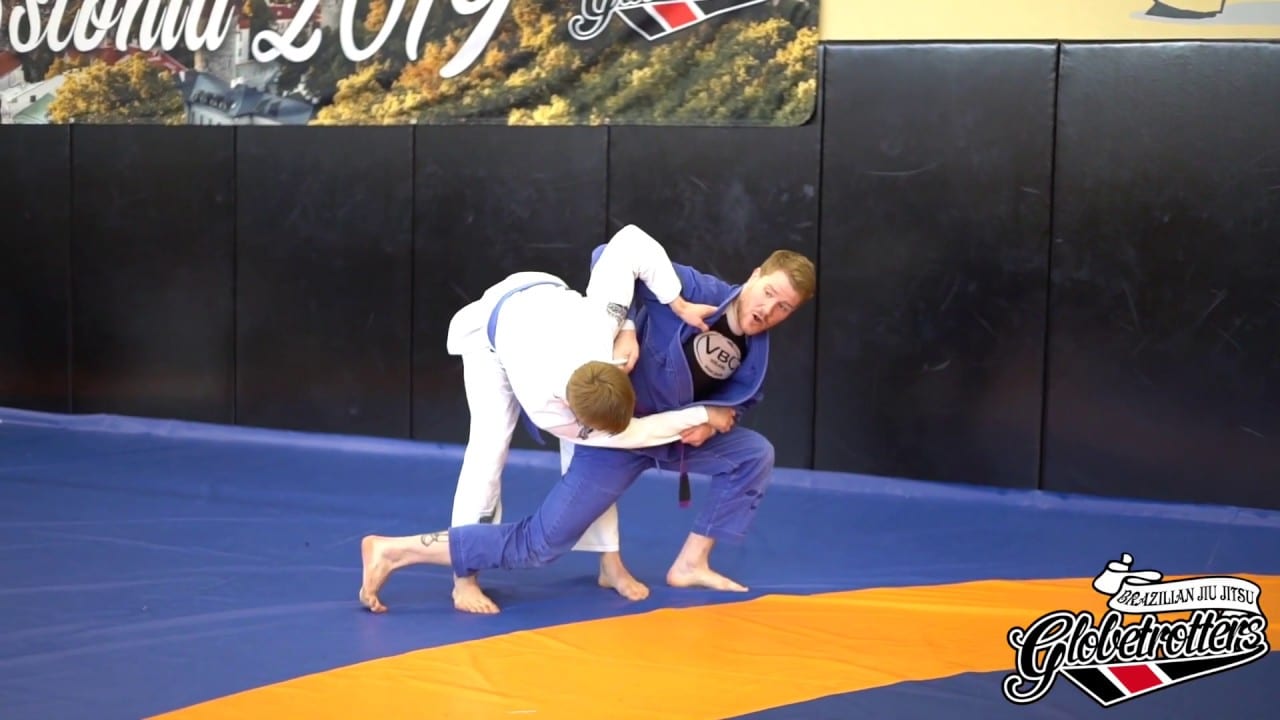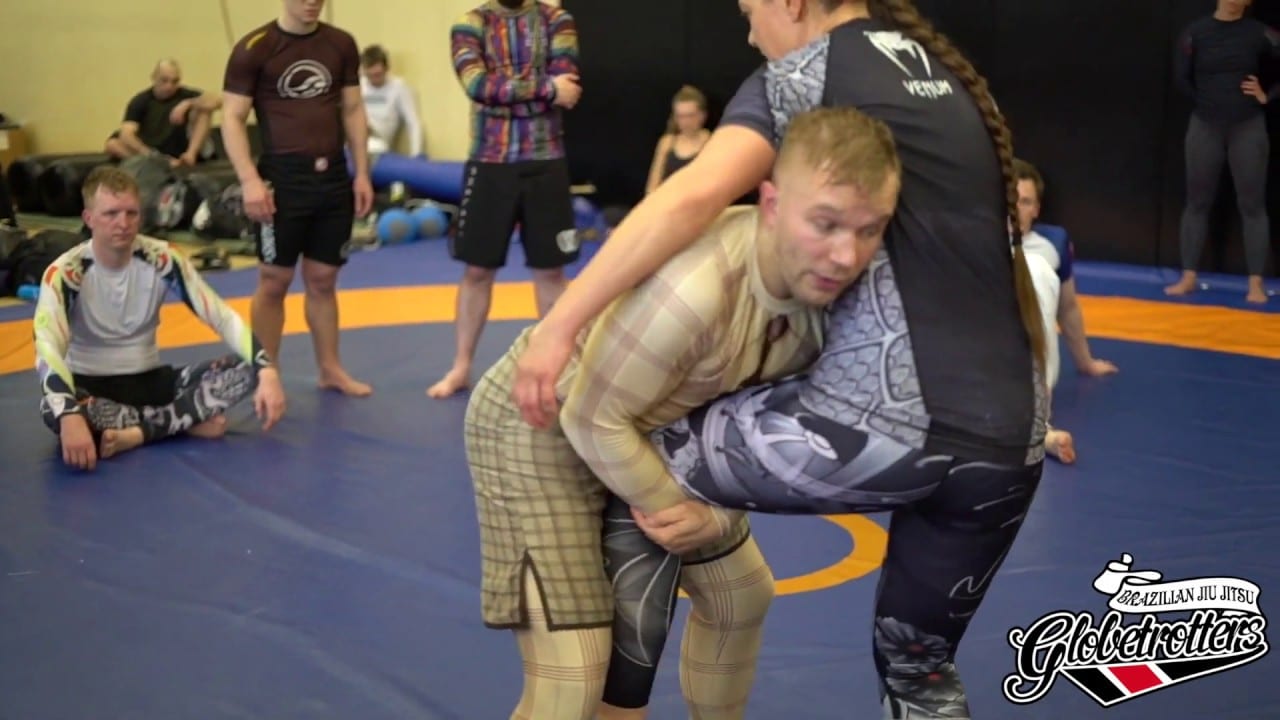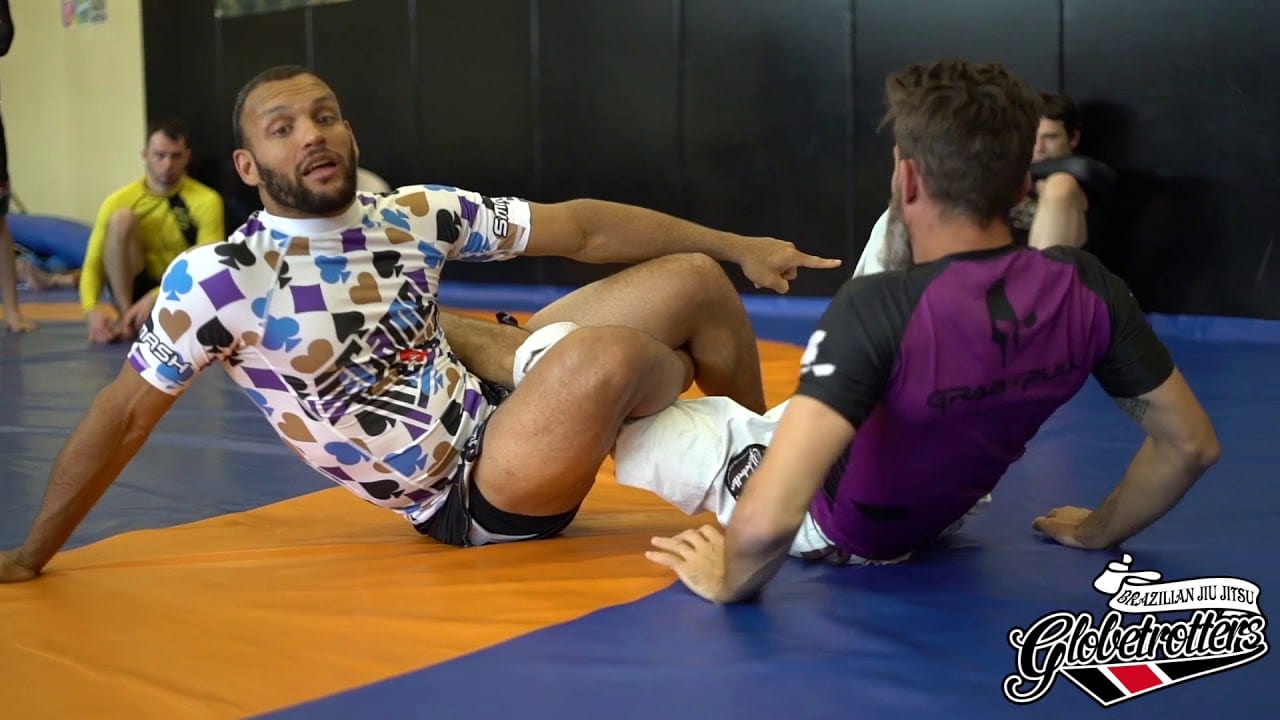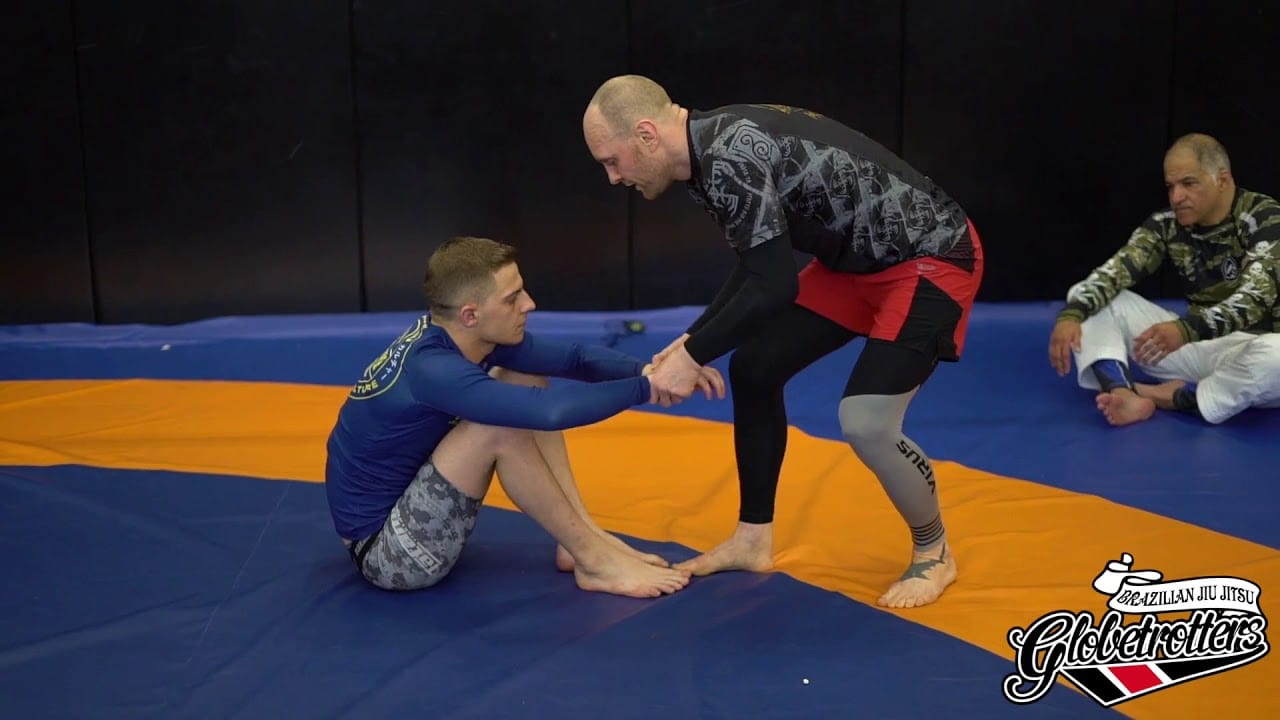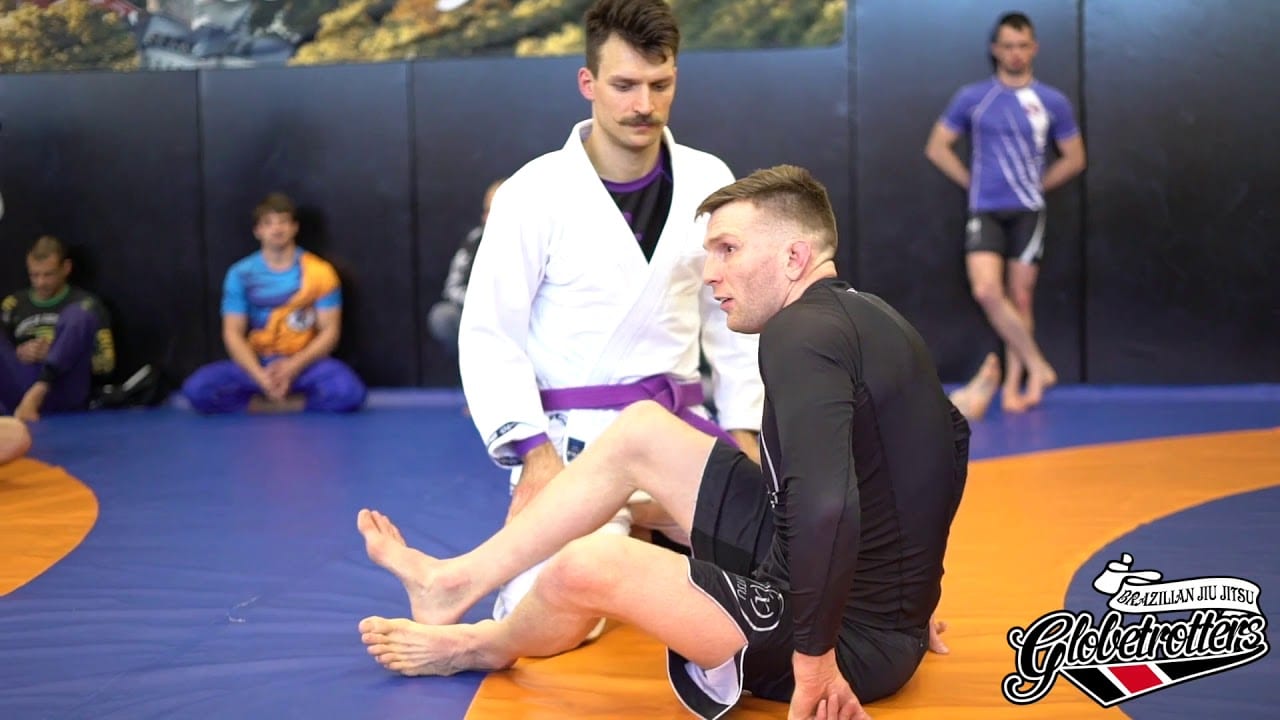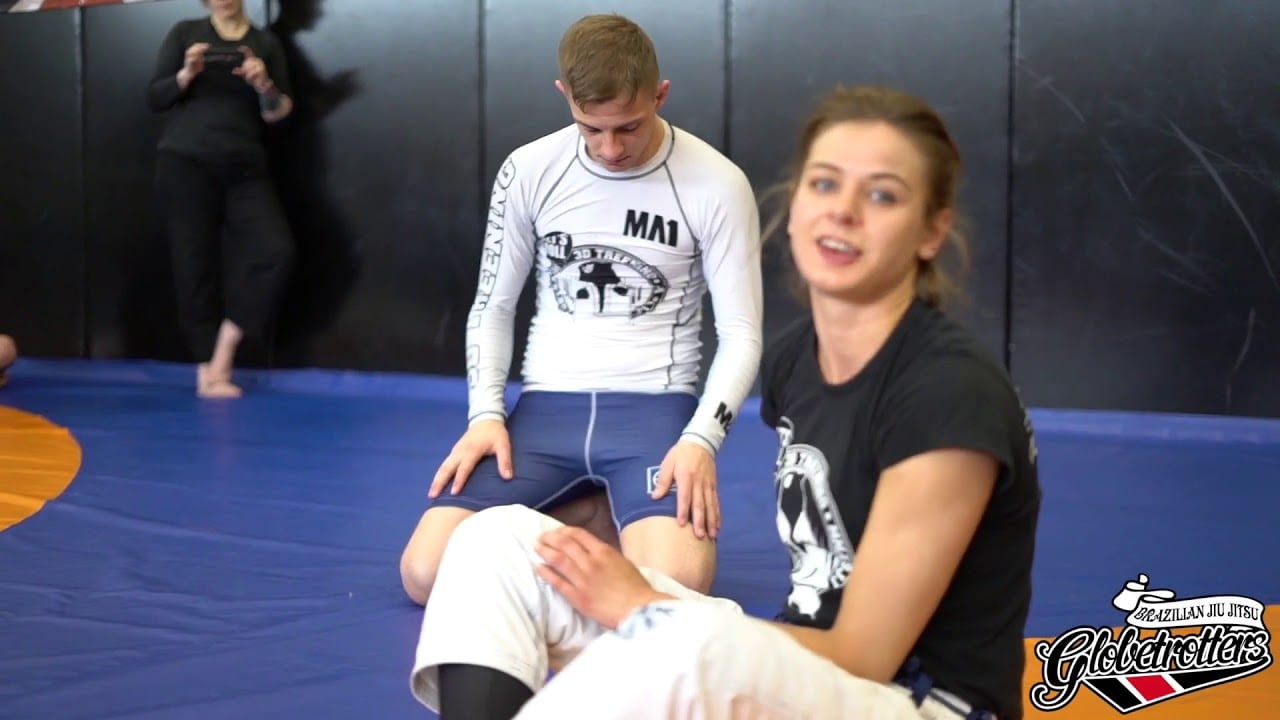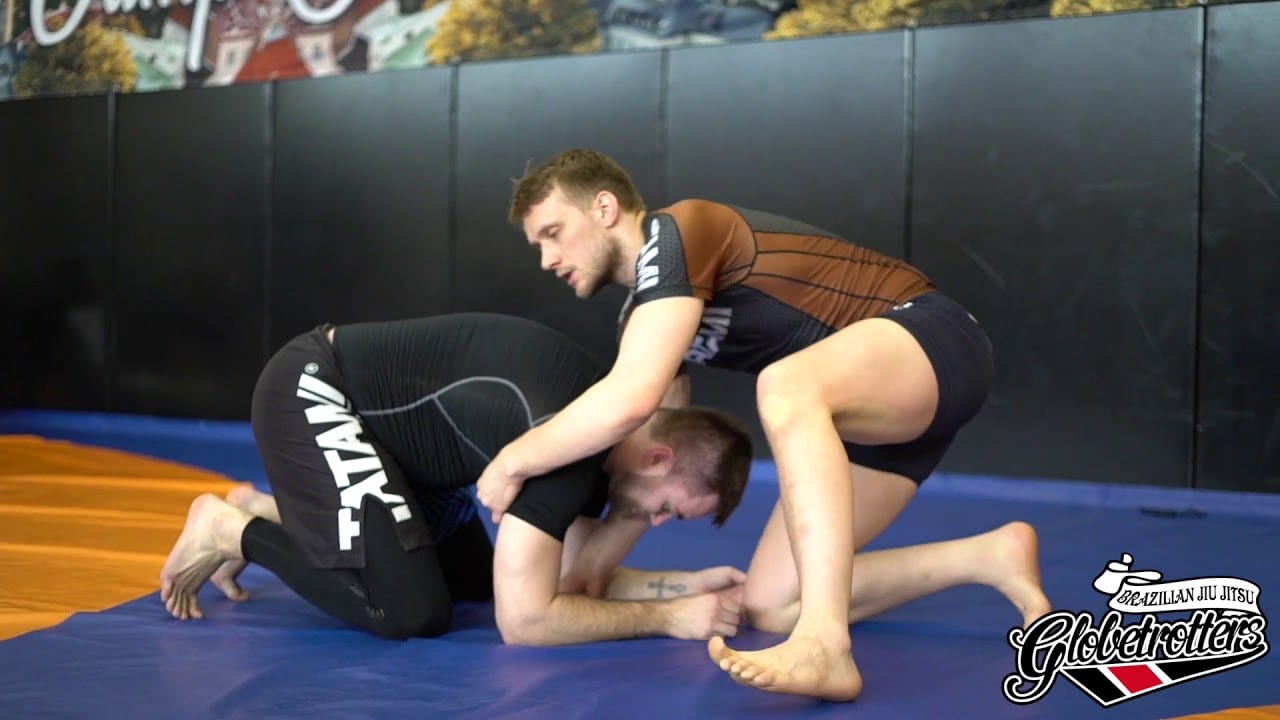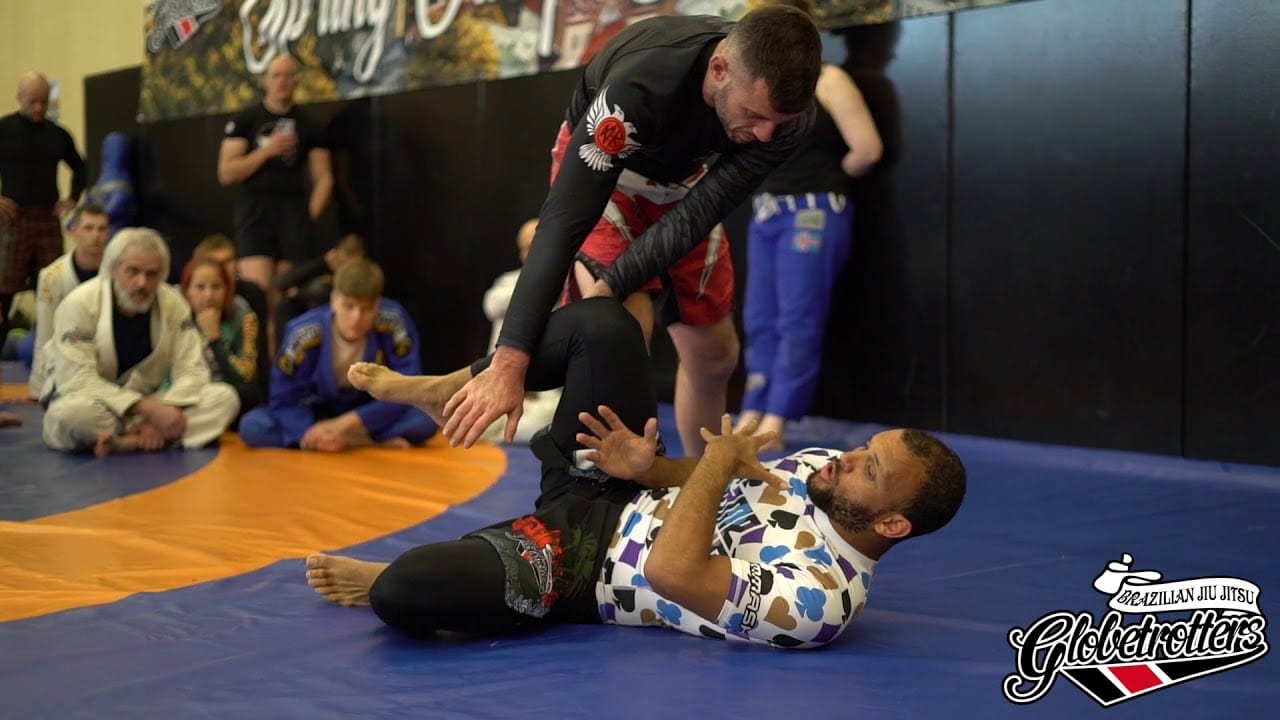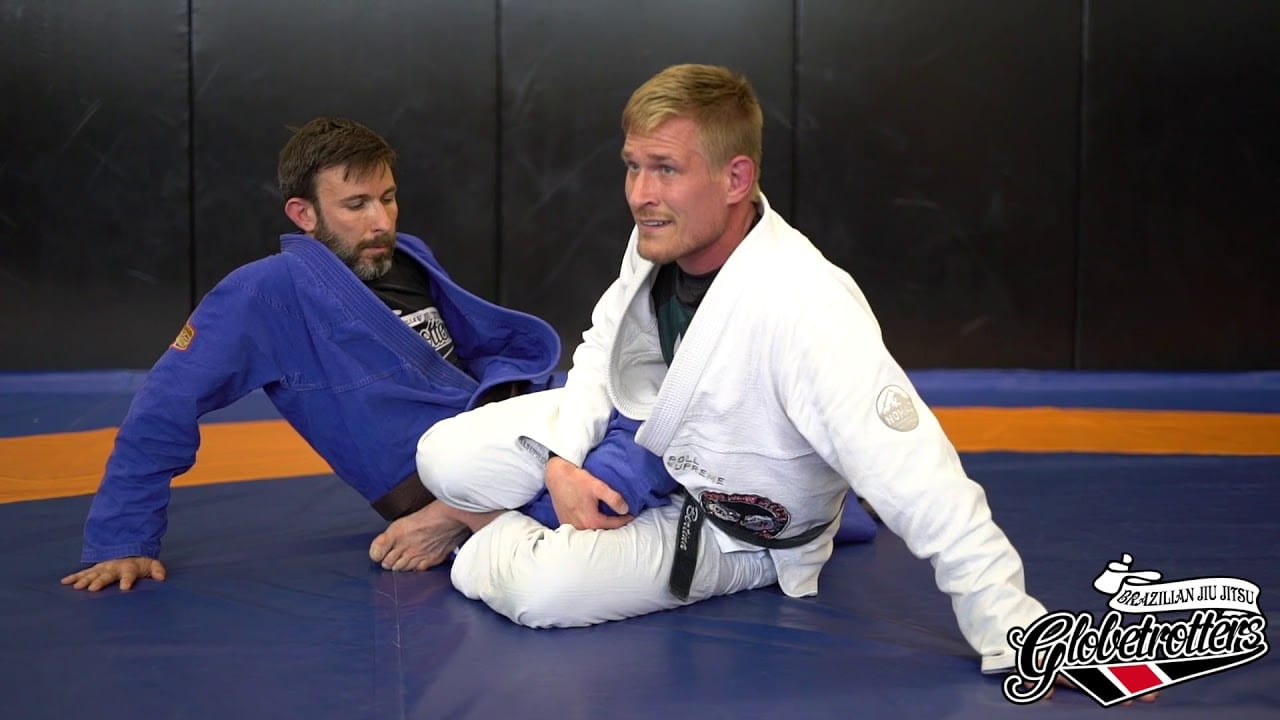Reasons to go: Very affordable, great food, beautiful ornate temples literally everywhere, extremely safe for solo female travelers, relaxed atmosphere, modern city convenience, great “beginner” Asian city destination
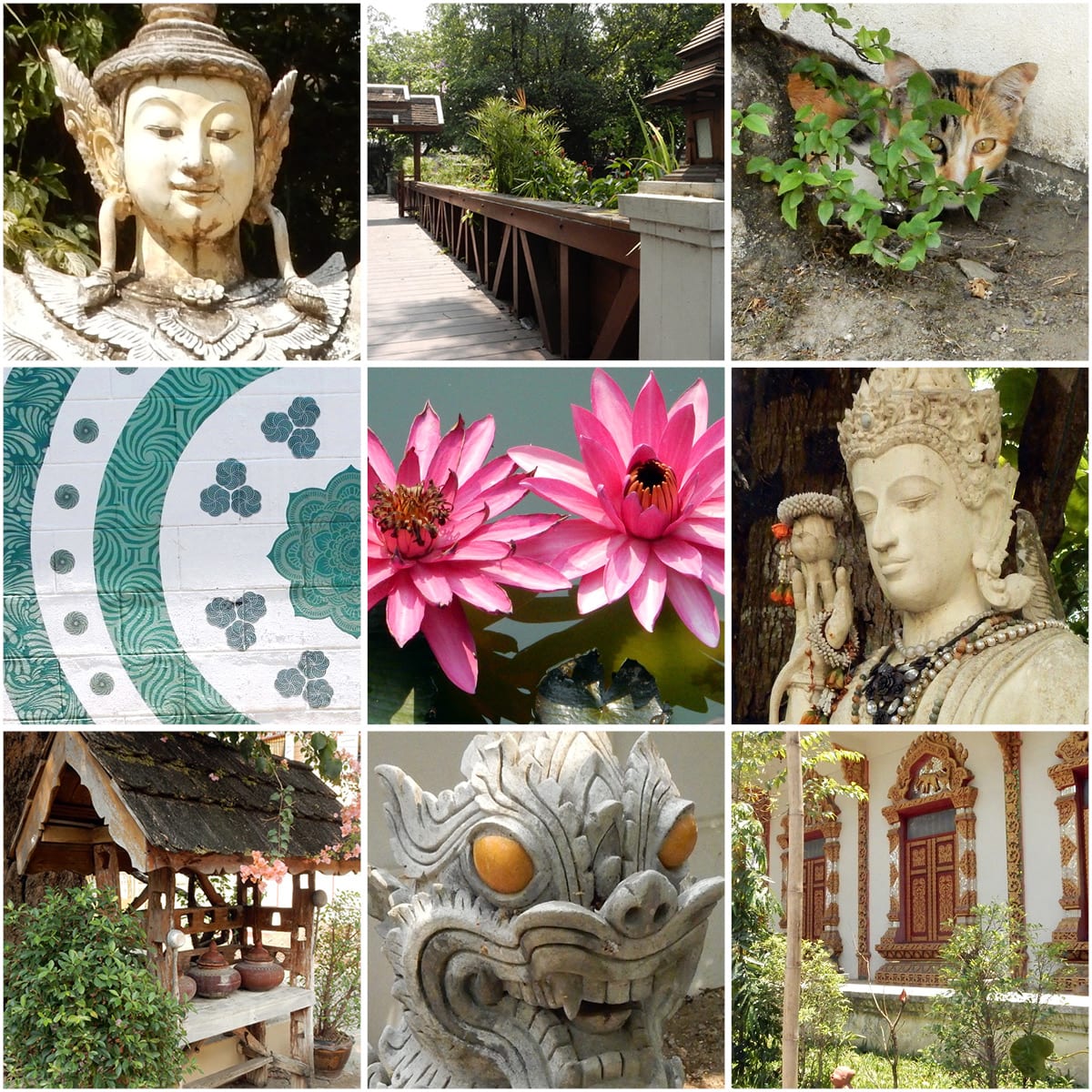
Chiang Mai is a medium sized city in the Northern part of Thailand, and was an excellent place to set up my home base for a month. It was, in all ways, an extremely affordable and very convenient city, with everything I needed (food, fast wifi, laundry, bjj training) within close, easy access. In addition, it had a wonderfully relaxed and peaceful ambiance, with a lot of lush vegetation – a much needed break after the two bigger, more hectic cities I’d previously stayed.
I quickly fell into a comfortable, pleasant daily routine here which I followed most of the month… wake up around 8-8:30ish without an alarm, have breakfast at one of the nearby restaurants, work most of the morning/afternoon with frequent breaks for iced coffee and Thai iced milk teas (so tasty!!) at the nearby cafes, have afternoon meal, bike to evening BJJ training, then have papaya salad and fruit or fresh coconut from one of the street vendors for dinner. This was broken up by laundry and the occasional day off to explore the city and do something touristic. My month in Chiang Mai flew by much too fast – if it weren’t for visa restrictions and the next part of the trip all planned out already, I could have happily stayed here much, much longer!
Chiang Mai would be an excellent “beginner” destination for anyone who hasn’t yet been to an Asian city. It’s safe, has many many grand temples to visit, isn’t overwhelmingly big, and has enough elements of normal everyday Thai life to make it an authentic experience while still having great tourism infrastructure making it easy to communicate and navigate the city.
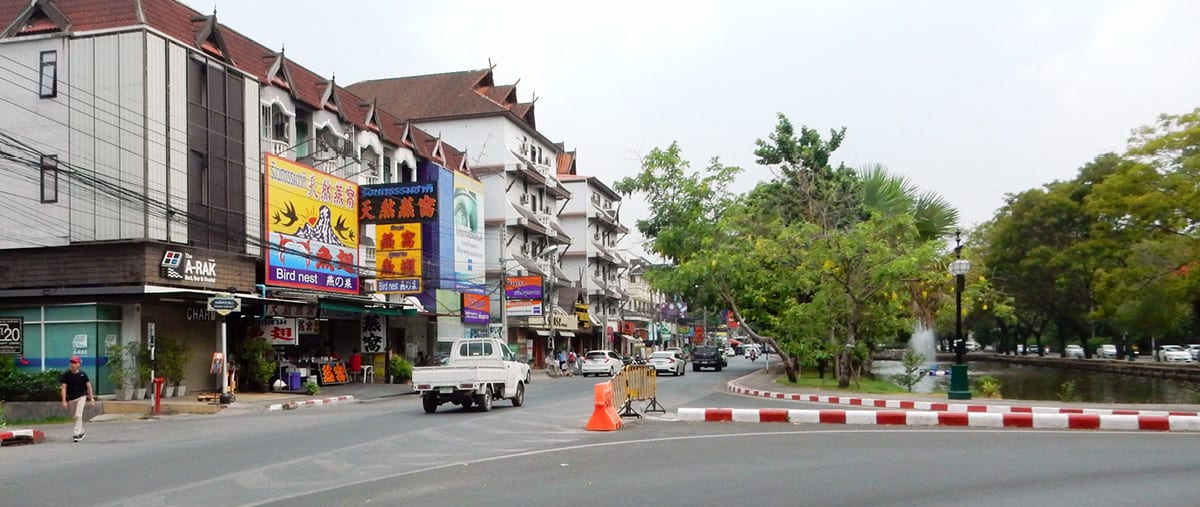
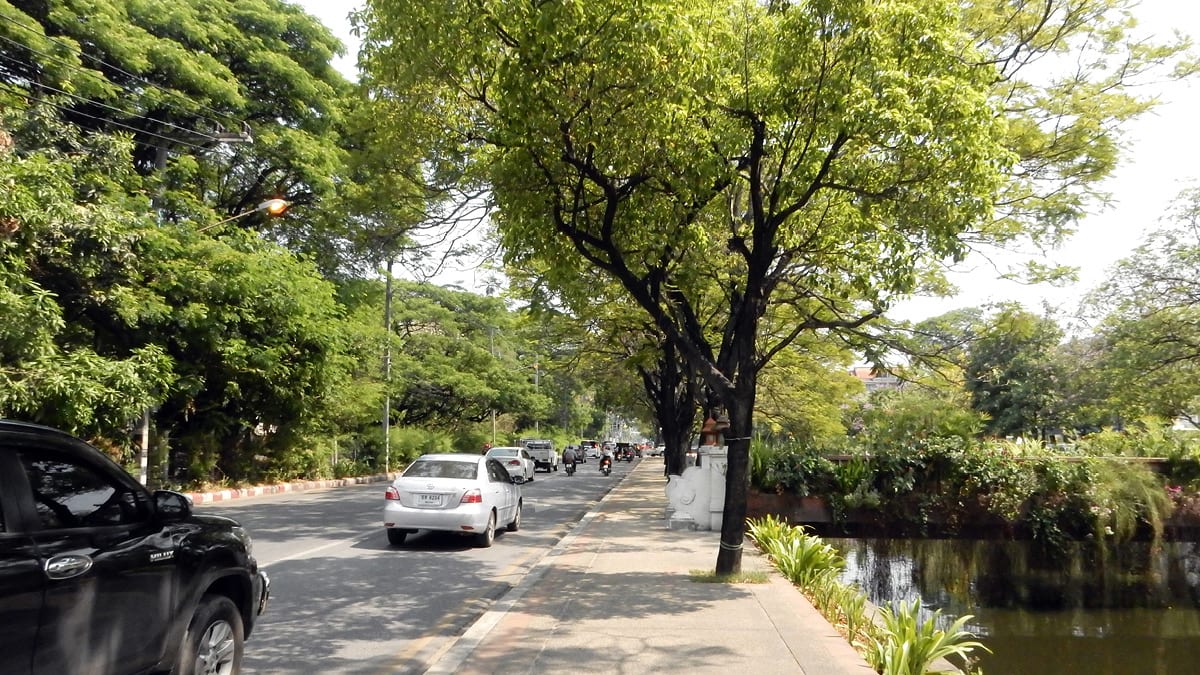
No Grab Taxis
Having become extremely accustomed to using Grab (Asian Uber) in Hanoi, first thing I did when I was ready to leave the Chiang Mai airport was to call a Grab taxi. Little did I know, Grab taxis are illegal here. The moment my driver arrived, four police men surrounded his car after some discussion in Thai which I didn’t understand, took him inside. When I asked the police what was happening, they thoroughly apologized for the delay and told me not to worry, that I should just to go wait in the car (which had been left running with the air conditioning on while they took the driver inside).
My poor driver returned about 15 minutes later looking a little shaken, and explained the situation. Turns out, all ride-share services (like Grab and Uber) are actually illegal here, on account of being an unregulated business taking work away from the official taxi drivers. The first offense is a 500 baht ticket (about $16), second offense is 2000 baht (about $63) and it escalates from there. This was fortunately my driver’s first offense. Someone later told me that Grab often actually pays the fines for their drivers in situations like this, as it still ends up profitable for them to pay the driver’s fines and keep operating in Thailand.
Ancient Walled City
At the center of Chiang Mai is the ancient walled city. It’s shaped like a square and is surrounded by a small moat, with many bridges for roads crossing over it. The water in the moat is covered with patches of lily pads with beautiful giant white and neon pink flowers blooming! There used to be walls surrounding the city as well, but only little pieces of those now remain. It takes about half an hour to walk from one of the corners of the walled city to the other.

Temple City
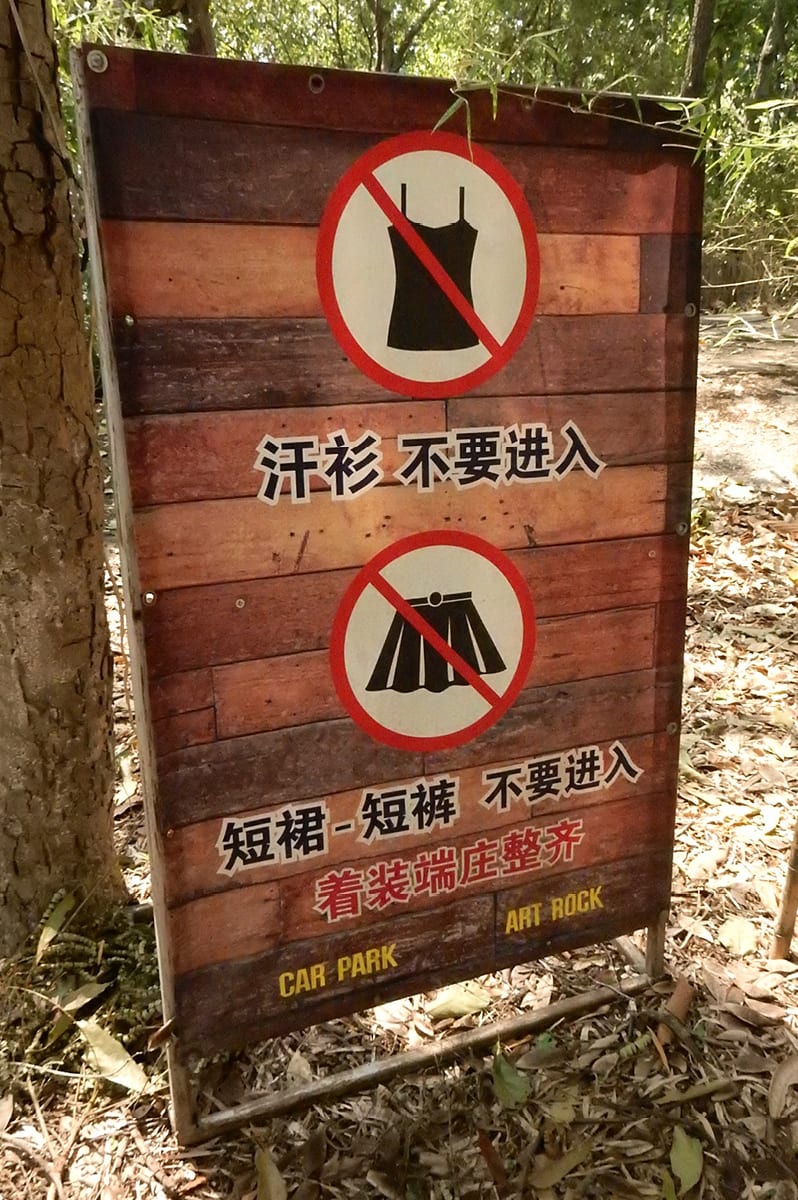 I don’t think I’ve ever been to a city with this many temples (almost all Buddhist) in such a small space! You literally can’t walk more than 5 minutes in any direction near the old city without running into another beautiful temple, and it’s not uncommon to see orange robed monks out and about. Just a reminder – it’s important to dress appropriately when visiting Buddhist temples. This means no tank tops or mini skirts, making sure to cover the shoulders, and wearing shirt/shorts that extend past the knees. Also, keep an eye out for signs about removing your shoes before entering, or just look for many shoes out front as an indication of when to remove yours. Also (very important), if you’re a woman – do not touch the monks.
I don’t think I’ve ever been to a city with this many temples (almost all Buddhist) in such a small space! You literally can’t walk more than 5 minutes in any direction near the old city without running into another beautiful temple, and it’s not uncommon to see orange robed monks out and about. Just a reminder – it’s important to dress appropriately when visiting Buddhist temples. This means no tank tops or mini skirts, making sure to cover the shoulders, and wearing shirt/shorts that extend past the knees. Also, keep an eye out for signs about removing your shoes before entering, or just look for many shoes out front as an indication of when to remove yours. Also (very important), if you’re a woman – do not touch the monks.
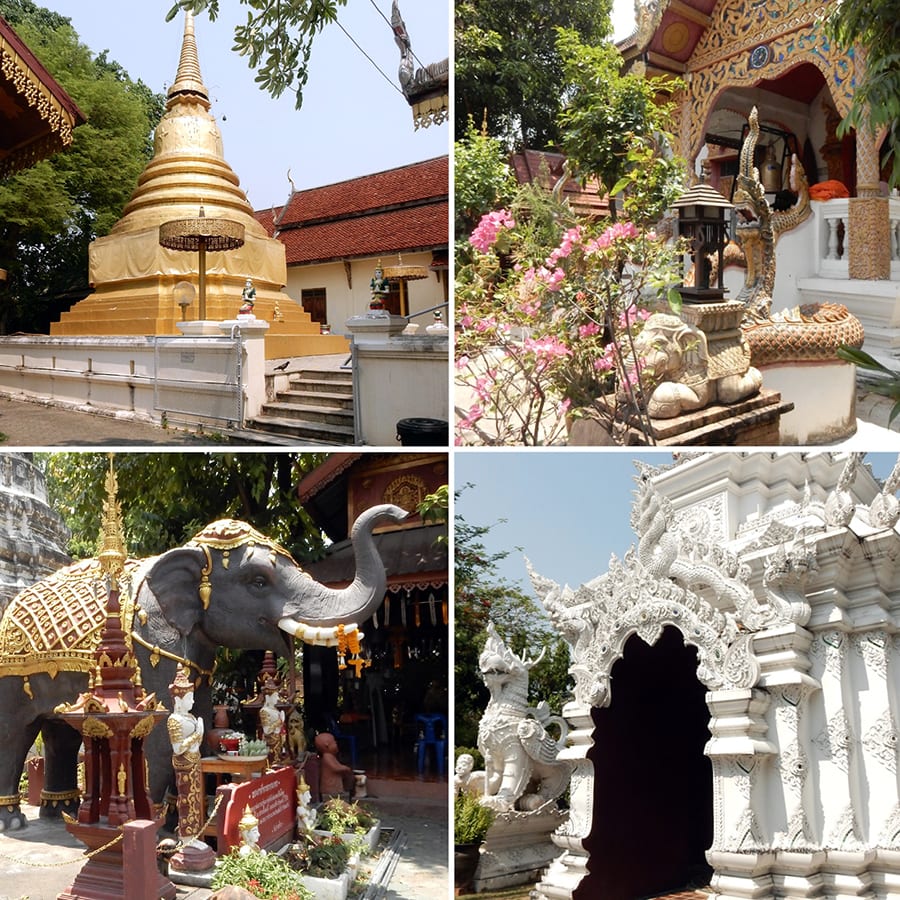
Tourist City
Chiang Mai (at least near the old city center) is very much a tourist city. It has great infrastructure for it, with tons of hotels, restaurants, coffee shops, and gift shops in old quarter. You’ll see plenty of other tourists (from all over the world) while out and about, and the local residents are very used to seeing and interacting with the tourists. Even people who don’t really speak English usually know a handful of words phrases to answer common questions, and the food menus often include English translations. There’s even a special “Tourist Police” to help out with any issues when involving a tourist! Chiang Mai has a large expat population as well, most of which work teaching English (employment for a Thai organization being one way to get an extended Thai visa).

Elephant Pants
 Many tourist clothing shops in Thailand (both Chiang Mai and Bangkok) sells a certain kind of loose, baggy, very light pants (or sometimes shorts and skirts of the same general style) with brightly patterned elephant print, which tourists seem to love and locals never wear. Nothing screams “I’m a tourist” like wearing a pair of elephant pants!
Many tourist clothing shops in Thailand (both Chiang Mai and Bangkok) sells a certain kind of loose, baggy, very light pants (or sometimes shorts and skirts of the same general style) with brightly patterned elephant print, which tourists seem to love and locals never wear. Nothing screams “I’m a tourist” like wearing a pair of elephant pants!
Knowing this… I’d refrained from purchasing these my entire first month in Bangkok, but needed new pants so finally caved and got a pair. And, let me just say, I can totally understand why people love wearing these! The super light, loose material is great in the heat, offers protection from the harsh sun and protection from mosquitoes, and they’re as comfortable as wearing pajamas! Zero regrets on this purchase!
One word of warning… I washed these pants (and a similar pair with a neon orange plant print) with some other items, and they turned everything in that load of laundry orange! So, if you get a pair, you might consider washing them separately or with similar colors the first couple times.
Burn Season and Pollution
Throughout most of the year the air in Chiang Mai is fine, but from December through April is burn season. This is the time when farmers clear their fields with fire during the driest part of the year in preparation for planting fields the following year. There’s a number of wildfire that occur this time of year too, due to the drier climate and lack of rain. This results in atrociously bad air, beyond just “unhealthy” into “hazardous” levels. People who can afford to often leave and go elsewhere for some/all of these months to avoid the worst of it.
I unfortunately didn’t know any of this when booked my trip to Chiang Mai and had scheduled to arrive a couple days after the official last day of burn season. Having seen a couple rather alarming articles and photos about how bad the pollution was, and having already developed a perpetual cough from the “unhealthy” air days in Hanoi and Bangkok, I was a little concerned about the impact this would have on my health. It was my hope that the air would improve once the official burn season had ended, but didn’t know how long that would actually take. I briefly even debated rescheduling the trip. But, having already booked (non-refundable) flights and accommodations – I ultimately decided to just go for it anyways. Thinking ahead, I did purchase a much more robust air mask before leaving Bangkok. Of course, it’s not possible to wear an air mask ALL the time (the inside gets damp with condensation after just a couple hours).
Fortunately, the pollution had cleared up considerably by the time I arrived. There were still a few days where the air reached “unhealthy” levels, and many more days where the air was “unhealthy for sensitive groups”, but nothing in the “hazardous” range, which was what I was really worried about.
I didn’t actually end up using my more robust air mask at all, and only wore the cloth mask on a handful of days. Oddly, even on the days where my phone’s app reported higher levels of pollution, it didn’t seem as visible in the air or seem to affect me as strongly as it had for the same levels in Hanoi. Perhaps I’d grown accustomed to it, or perhaps it was just a different kind of pollution (fires instead of vehicle exhaust) which I was less sensitive to.
Transportation
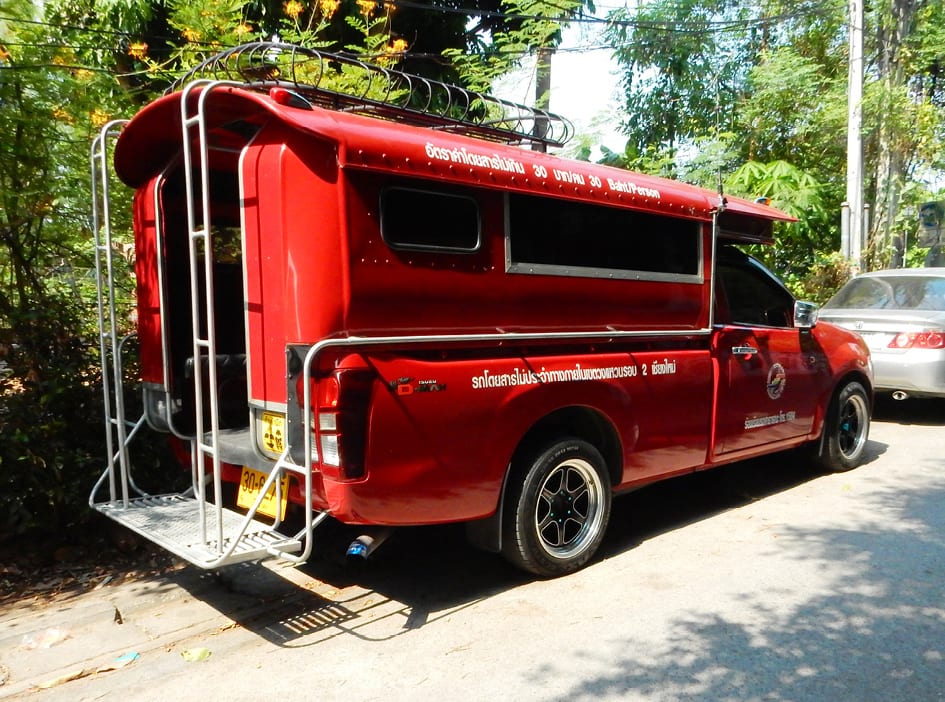 Options for transportation in Chiang Mai are walking or renting a bicycle (great options near the old city center if not going far), renting a scooter, shared taxis, regular taxis, tuktuks (three wheeled taxis), app based bike rental, or the bus. There is no metro or tram system in Chiang Mai.
Options for transportation in Chiang Mai are walking or renting a bicycle (great options near the old city center if not going far), renting a scooter, shared taxis, regular taxis, tuktuks (three wheeled taxis), app based bike rental, or the bus. There is no metro or tram system in Chiang Mai.
You’ll see red shared taxis vans throughout most of Chiang Mai, they’re extremely common and easy to find. The back of the vans is opened, lined with two rows of benches facing each other to accommodate about 10 people. The fare is based on the number of people in the vehicle, the number of people in your group, and how far you’re going. In the busier areas, the taxi has predefined stops and will wait until the vehicle is full before leaving, meaning you might have to wait 5-15 minutes before they depart. When leaving from one of the more touristic areas when the taxi is full, the rates are very cheap. If you’re the only person in the taxi, the driver will take you exactly where you want to go (as opposed to a predefined stop), but you’ll end up paying a lot more.
As mentioned above, ride-share services such as Grab are illegal, though there are still quite a few drivers operating throughout the city. The few times I considered using Grab, a quick comparison of rates at that time of day showed that they weren’t actually significantly cheaper than using the shared taxis though, so I ended up using the official shared taxis instead.
Besides that, it is possible to get regular taxis as well. I used one to get to the airport on my last day since I was leaving at 5am (with a suitcase) and didn’t have great confidence there would be shared taxis operating and easy to find at that time of day.
Chiang Mai has two app based options for transportation: Mobike (for bicycles) and Neuron (for little electric scooters). There are bikes/scooters scattered throughout the city, an app on your phone lets you unlock a vehicle, you pay for the short time you’re using it, and you’re not obligated to return it to a specific point. Mobikes sounded like a really great idea and I initially did want to go that route instead of renting a bike for the month, but a glitch in the app didn’t allow it to function properly on my phone. I contacted the company about this via email, but they never replied.
There is a bus system in Chiang Mai as well, though I didn’t actually try using it. You’ll need to use the app ViaBus to get information on routes, since Google Maps doesn’t provide bus information, and searching for it online isn’t helpful (unless maybe you’re fluent in Thai).
One word of warning for those renting scooters/motorbikes: I very frequently saw scooter check points on the roads along the old city wall, where police would restrict the road and everyone on a scooter (tourist and local alike) had to pull over and present some documents. I’m not sure what those documents entailed since didn’t rent a scooter myself, but whatever they are – do make sure to carry them with you while driving to avoid fines or tickets!
Biking in Chiang Mai
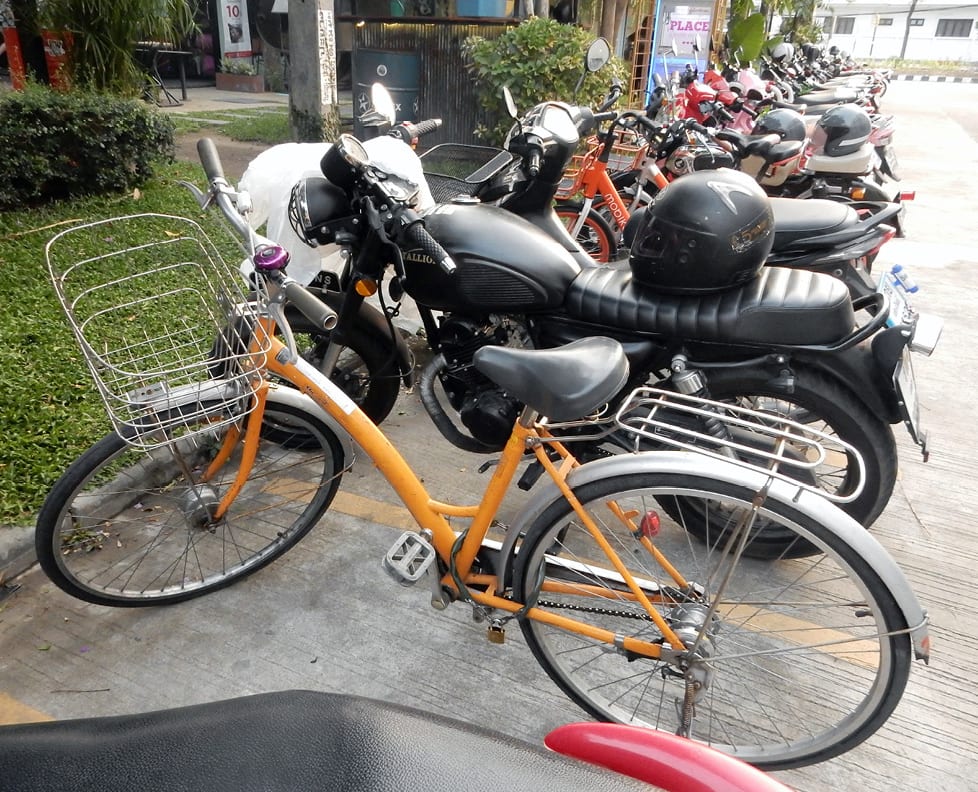 Sometime in the first couple days of my stay in Chiang Mai, I went ahead and rented a bicycle for the month, which turned out to be a really brilliant idea! Not only was it fun to ride, it was awesome to have my own transportation instead of relying on taxis. The rates for bicycle rentals at a couple different shops ranged from 900baht to 1500baht ($28-$48) per month for a basic street bike. I went with the cheaper bike, which was a somewhat older/simple model but worked (mostly) fine. It came with a basket on the front, a bell, a friction powered front light, and a lock and chain large enough to lock the back wheel to the frame. It didn’t include a helmet, which isn’t required here. The gears on my bike didn’t really work but were stuck in one of the higher gears, which was fine for getting around town on flat streets.
Sometime in the first couple days of my stay in Chiang Mai, I went ahead and rented a bicycle for the month, which turned out to be a really brilliant idea! Not only was it fun to ride, it was awesome to have my own transportation instead of relying on taxis. The rates for bicycle rentals at a couple different shops ranged from 900baht to 1500baht ($28-$48) per month for a basic street bike. I went with the cheaper bike, which was a somewhat older/simple model but worked (mostly) fine. It came with a basket on the front, a bell, a friction powered front light, and a lock and chain large enough to lock the back wheel to the frame. It didn’t include a helmet, which isn’t required here. The gears on my bike didn’t really work but were stuck in one of the higher gears, which was fine for getting around town on flat streets.
Riding a bike on the larger streets made me a little nervous at first, mostly because I’m not accustomed to riding bicycles on the street at all, and there’s no dedicated bike lanes here. But, after a couple days of getting accustomed to my bike and the roads, it was really no problem at all! Bikes here ride mostly on the far left (all traffic in Thailand drives on the left), and share that lane with scooters, parked scooters, moving cars, and parked cars. I learned that it’s best to just ride at as steady, even pace and not make any sudden stops, speed changes, or sharp turns – the faster cars and scooters will adjust their path accordingly when needed. I had the general impression that drivers were much more aware of bikes here than in US. This is probably due to the huge amount of scooters, bikes and pedestrians using the roads, which makes drivers much more accustomed to looking out for these smaller vehicles.
Intersections
One odd thing to be aware of – intersections work a little differently here than in US and Europe. In those countries when the intersection is a square (two roads crossing), opposing lanes are given green lights and permitted to go at the same time. Here in Chiang Mai, each side of the square at the intersection takes a turn going when their light is green, during which the other three sides have red lights and must wait. Another important thing to keep in mind is that people drive on the left here.
Summertime Days
Summer starts around April in Chiang Mai, so it was extremely hot 40°C (100°F) most days with little/no rain while I was here. Throughout most of the day, but especially between 11am – 4pm, the city was a ghost town. It was just so unbearably hot that people didn’t want to spend any more time than absolutely necessary outside!
Fortunately, many indoor places in Chiang Mai do have air conditioning. Many restaurants are covered with an open-air wall and fans but no air conditioning, however. So, for someone unaccustomed to the heat, summer might not be the best time to visit this city. If you do visit in summer – make sure to have plenty of sunscreen and water when you go outside for longer periods of time, as well as mosquito repellent (especially if going into the woods or on the outskirts of the city).
The evenings in Chiang Mai were wonderful though, once the day time heat was reduced to just pleasantly warm, without the bright harshness of the sun. In the evening, the town became much more lively with people of all ages (families, couples, groups of friends, tourists) walking around, hanging out in front of their homes or at tables out front of cafes, and street vendors open selling various snacks.

Delicious Thai Food
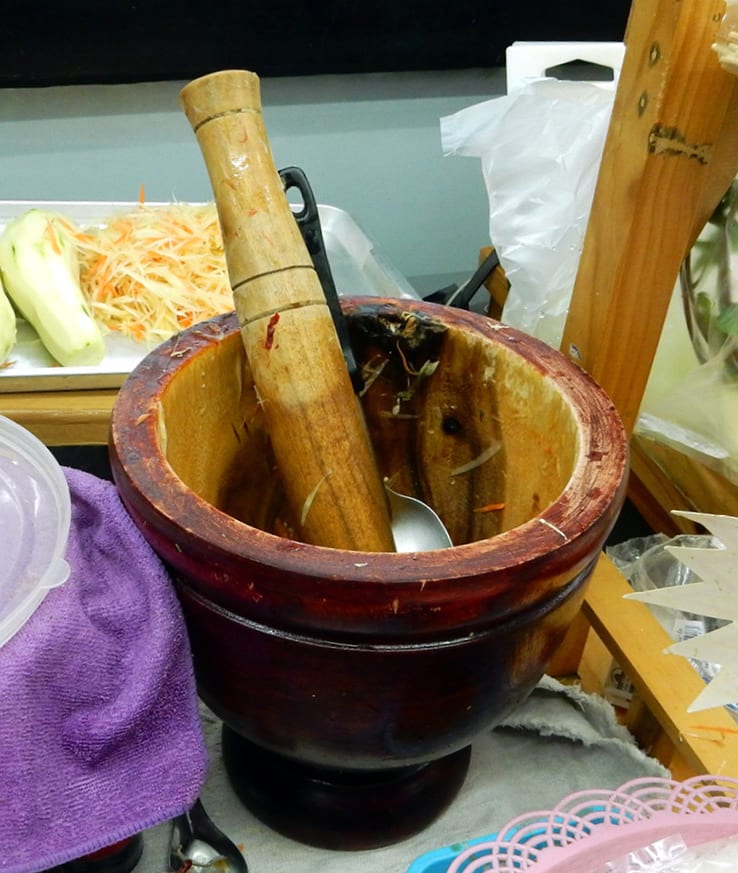 Thai food here continued to be amazing, including various combinations of rice, noodles, light soups, veggies, meat, dumplings and sauce. The food here seemed overall sweeter and less spicy than in Bangkok. I could be less cautious about making certain not to order spicy meals and there was more on the menus that wasn’t spicy to choose from.
Thai food here continued to be amazing, including various combinations of rice, noodles, light soups, veggies, meat, dumplings and sauce. The food here seemed overall sweeter and less spicy than in Bangkok. I could be less cautious about making certain not to order spicy meals and there was more on the menus that wasn’t spicy to choose from.
Throughout the city, there were many street vendors which specialized in selling specific items such as smoothies, papaya salads (made fresh in a giant wooden bowl and pestle!), meat on a stick (freshly fried in oil), ice cream with toppings of choice, and fresh fruits. The papaya salads and watermelon smoothies were my favorite – the perfect refreshing meal and drink on a hot evening!
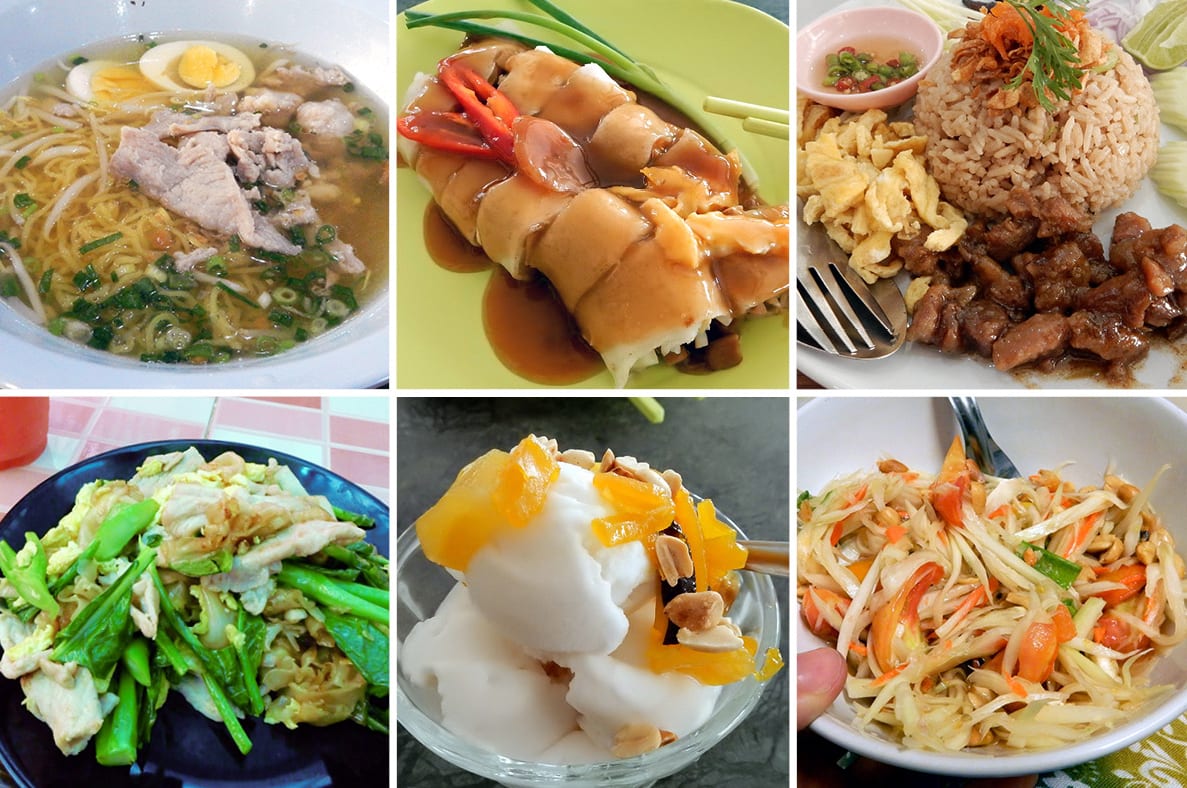
Coffee
Coffee was VERY affordable here, about $1.00 for a large iced mocha with whipped cream which would have easily cost 4x that at Starbucks in the US! The coffees here use condensed milk instead of regular milk, and the whipped cream is much lighter with less of a dairy base than in the US, which I actually prefer. There’s also a huge assortment of smoothies and milk iced teas for similar pricing, all of which are pretty delicious. Gotta try them all!
Water
Before going to Thailand, I’d heard plenty of warnings about the importance of being careful with the water, making sure to consume only water and ice from bottled sources due to high levels of bacteria etc. in the local water that would make me sick. Well, I DID drink water and I DID have ice cubes whenever offered in restaurants without confirming the source was bottled… and had zero digestive issues the entire time I was here. Most restaurants do additionally have bottled water available though, for anyone uncomfortable with drinking their normal water. Only the newer tourists actually purchase those though.
The host of my AirBnB accommodations offered free bottled water from a water delivery service for all the guests (so I didn’t drink water directly from the tap there). This probably saved me at least $100 with how much water I was drinking, given how hot it was!
Buddhist Temple Wat Pha Lat
One of my tourist days off was spent walking the “Monk’s Trail” up to Wat Pha Lat (one of the temples on top of a hill). The starting point of the trail was roughly 15 min away from my studio by taxi. I had briefly considered riding my bike there, but wasn’t sure if there would be a good place to leave the bike, or if I’d be returning to the same point afterwards. In hindsight, I’m very glad I decided to take the taxi! The trail head was further away than I imagined when looking at a map, and the last part of the road included a handful of very steep inclines, which would not have been fun riding on a very hot and cloudless day.
From the trail head, the hike up to Wat Pha Lat meandered through the forest (which got progressively denser the further up you went), going steadily upwards the entire time. Along the way you can see knots of orange cloth (like the monk’s robes) tied to trees marking the path, many of which are now pretty faded with time. Even without these markers, the path is very clearly visible. I tried to imagine what it must have been like to be a monk walking this path to get to the temple in sandals every day. The trail wasn’t too long or too difficult, taking about 45 minutes to get to Wat Pha Lat. I’d say it’s pretty accessible to anyone, even kids or people without any athletic abilities.
One word of warming – ants were everywhere in the forest. There were lots of mosquitoes too, which largely completely ignored the copious amounts of mosquito repellent I’d applied and went ahead and bit me anyways.
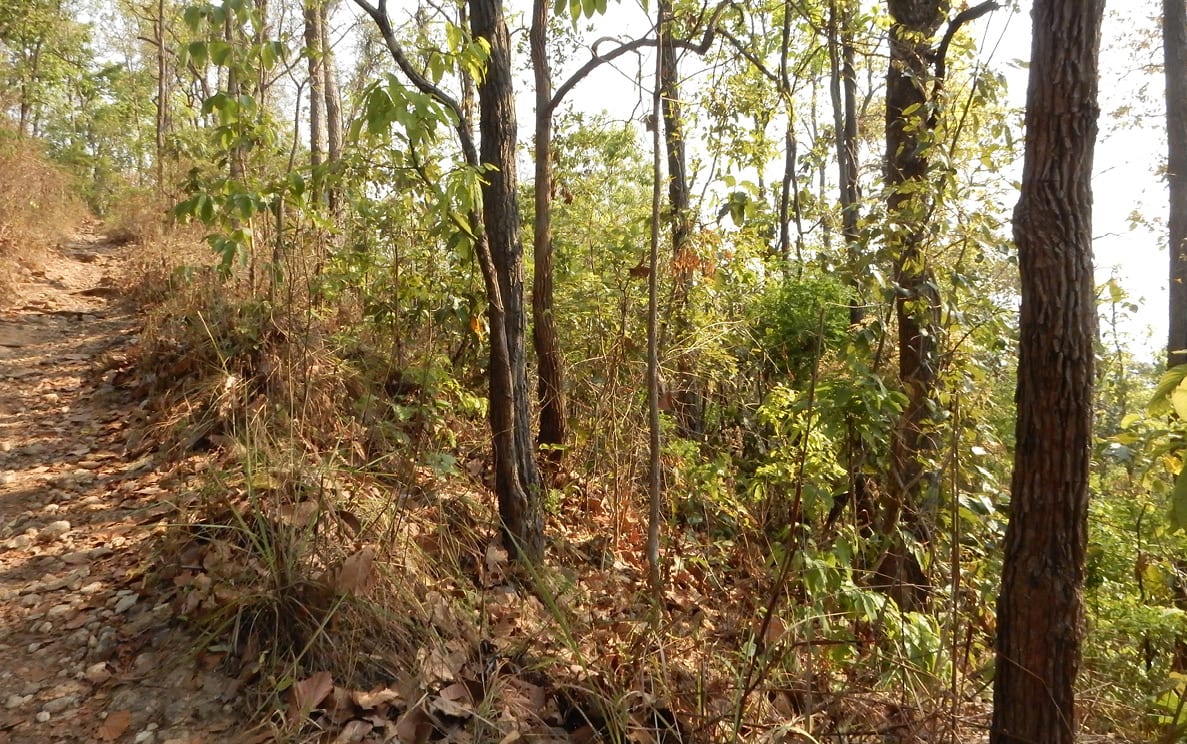
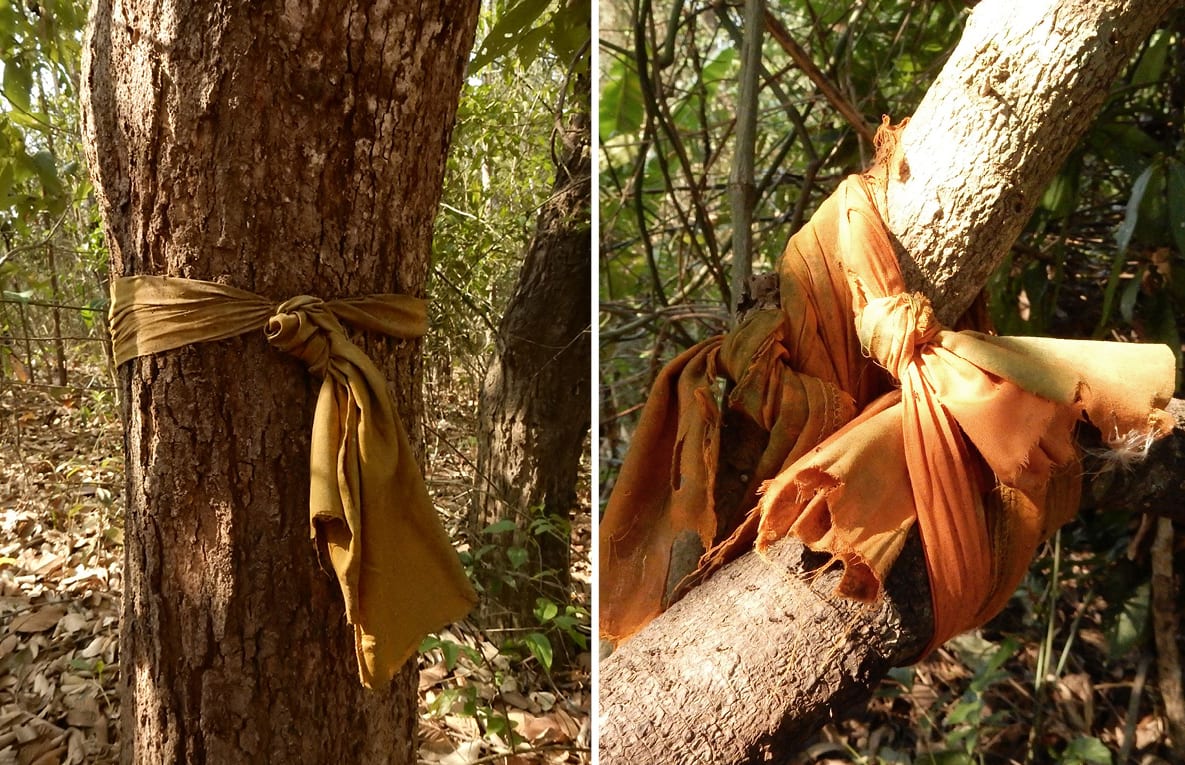
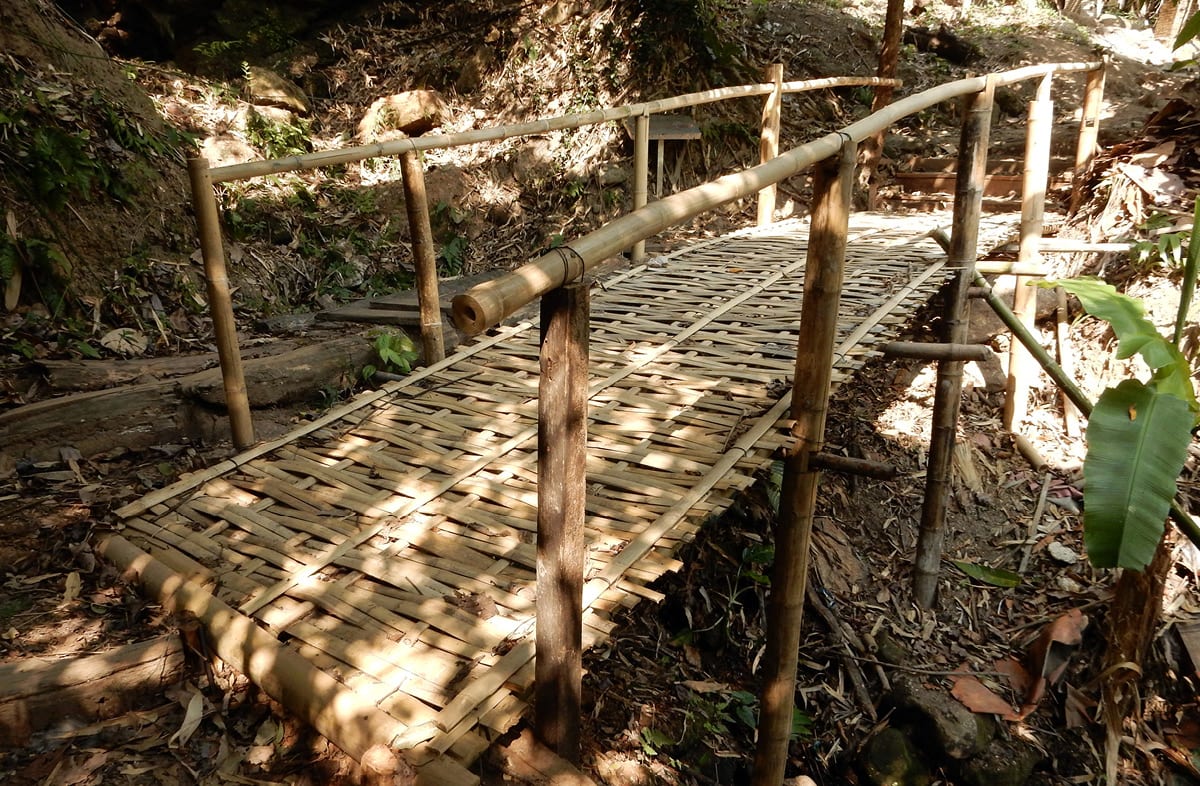
 Wat Pha Lat at the top was very lovely – very well taken care of, with many beautiful and ornate stone sculptures and a few plants creeping in as if nature had started reclaiming the buildings. It had a very peaceful and calm atmosphere, and while there were a handful of other visitors, it was not overwhelmingly full of tourists. Heading further up the road you can find two smaller (also very pretty) temple buildings, with statues of Buddha inside.
Wat Pha Lat at the top was very lovely – very well taken care of, with many beautiful and ornate stone sculptures and a few plants creeping in as if nature had started reclaiming the buildings. It had a very peaceful and calm atmosphere, and while there were a handful of other visitors, it was not overwhelmingly full of tourists. Heading further up the road you can find two smaller (also very pretty) temple buildings, with statues of Buddha inside.

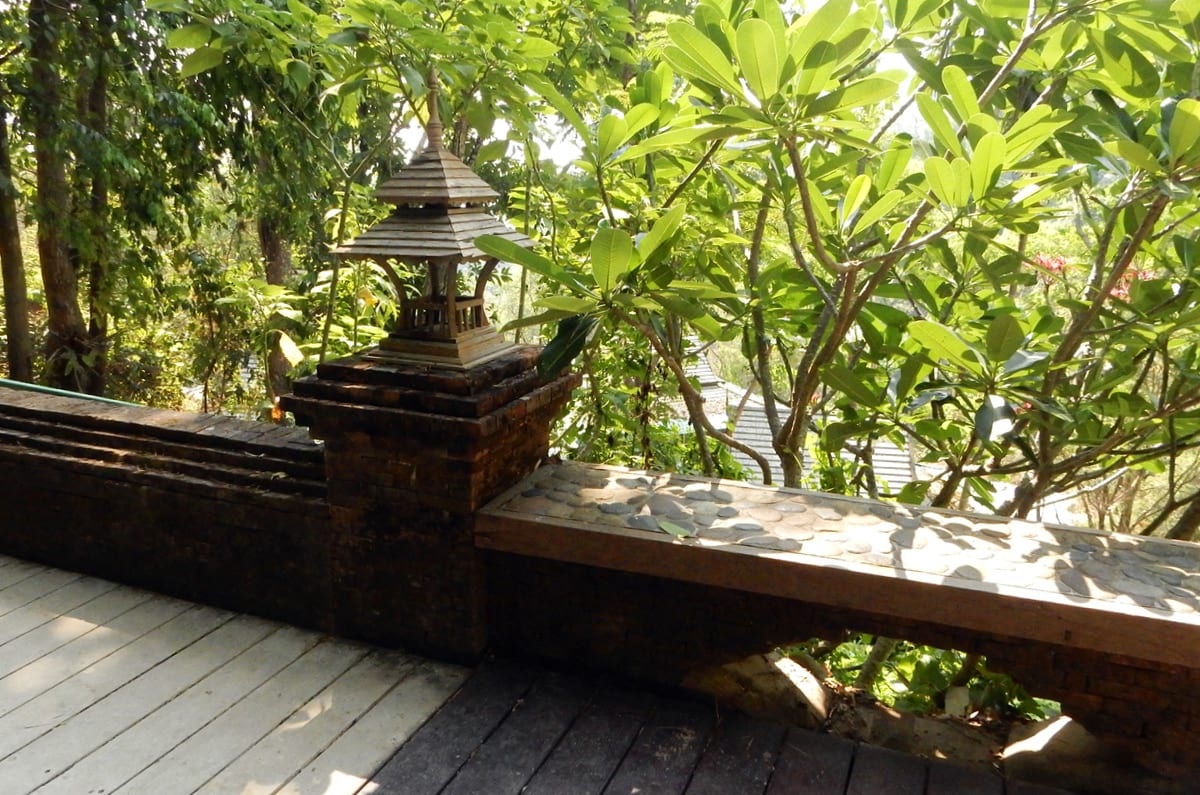
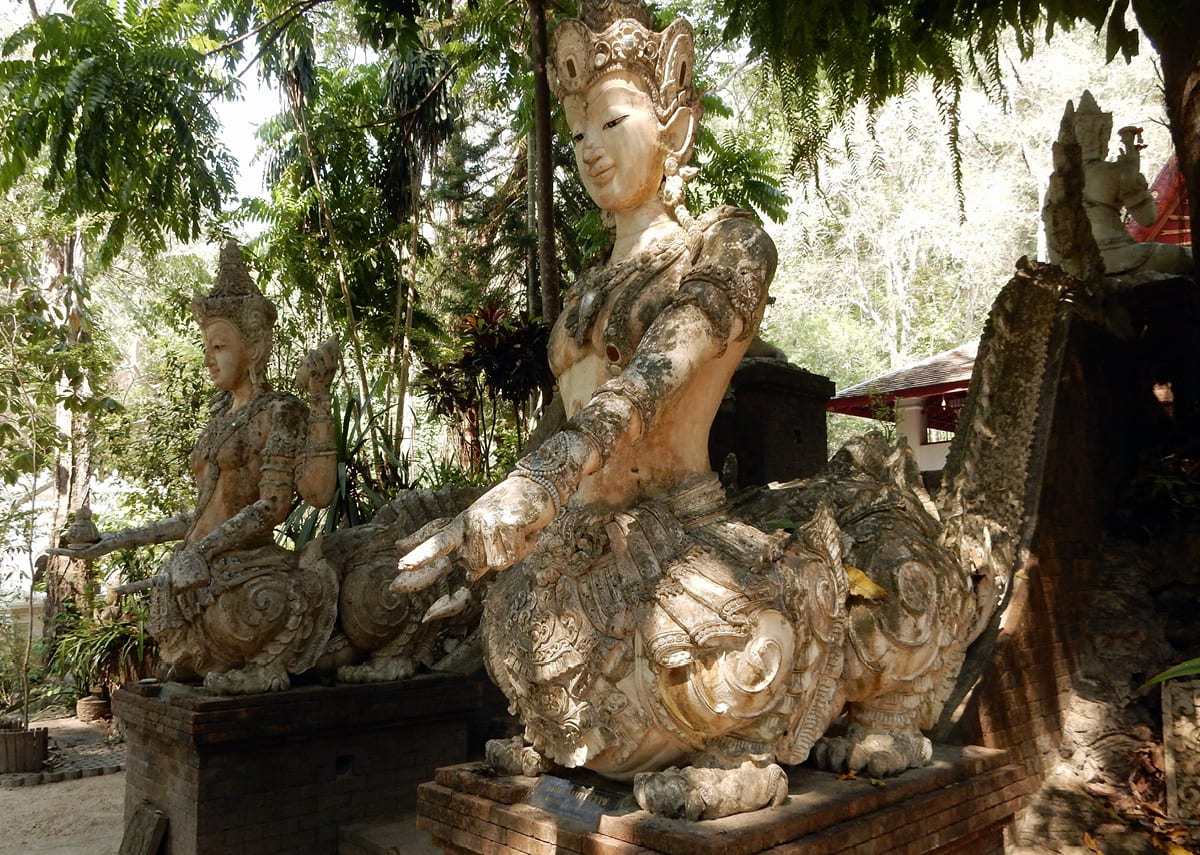

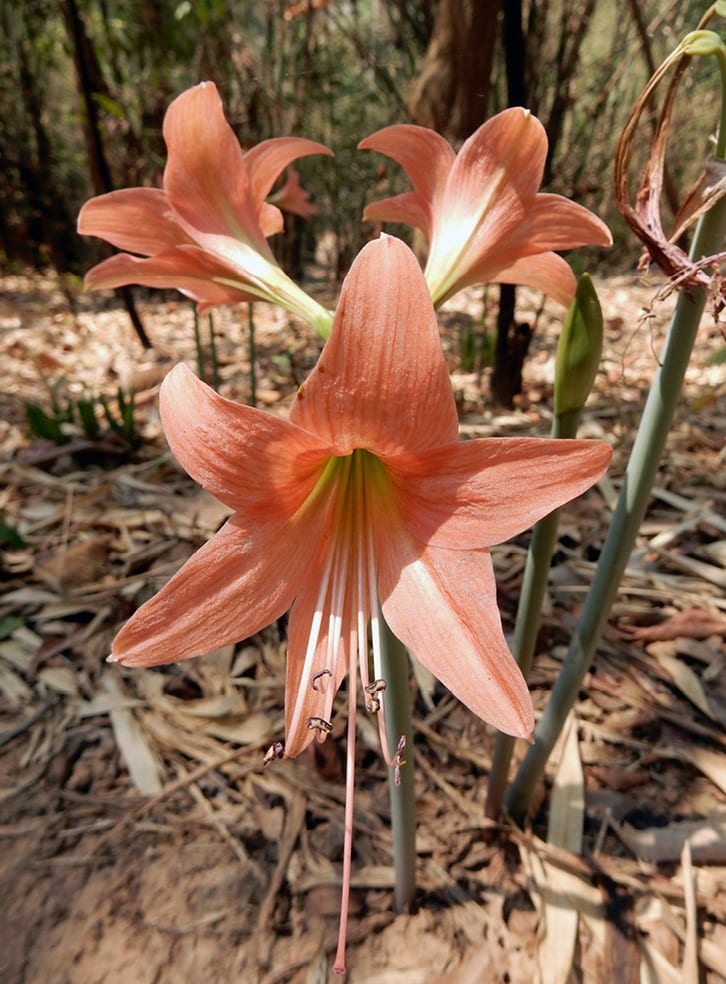 From Wat Pha Lat, you can actually keep hiking to Doi Suthep (another larger but far more busy and touristic temple) by taking the Nature Trail. This trail was also well maintained and clear to follow, but is a bit more strenuous – it goes basically uphill at the steepness of a staircase the entire way. Directions to the Nature Trail are as follows… to find the trail head, leave Wat Pha Lat following the street uphill until you get to the main road. Cross the main street, and follow it uphill (towards the left) for about 5 minutes. The Nature Trail is the first path going off into the forest that you’ll encounter on your right, where the power lines cross. The trail continues to follow the power lines up the entire way – this is an easy indication that you’re on the right trail. Eventually (after maybe 45 minutes), the Nature Trail will come to the main road, which you can follow uphill for about 5 more minutes more to get to the Doi Suthep area. This area is super touristic, including a little market with lots of food stalls, gift and clothing shops.
From Wat Pha Lat, you can actually keep hiking to Doi Suthep (another larger but far more busy and touristic temple) by taking the Nature Trail. This trail was also well maintained and clear to follow, but is a bit more strenuous – it goes basically uphill at the steepness of a staircase the entire way. Directions to the Nature Trail are as follows… to find the trail head, leave Wat Pha Lat following the street uphill until you get to the main road. Cross the main street, and follow it uphill (towards the left) for about 5 minutes. The Nature Trail is the first path going off into the forest that you’ll encounter on your right, where the power lines cross. The trail continues to follow the power lines up the entire way – this is an easy indication that you’re on the right trail. Eventually (after maybe 45 minutes), the Nature Trail will come to the main road, which you can follow uphill for about 5 more minutes more to get to the Doi Suthep area. This area is super touristic, including a little market with lots of food stalls, gift and clothing shops.
BJJ Competition
There was by chance a small local BJJ competition in Chiang Mai happening one of the Saturdays I was there. I briefly thought about signing up last-minute but couldn’t find any info online, so decided just to spectate instead. The competition was located on 5th floor of a mostly unused section of a huge mall and was initially a little hard to find. I asked a few people in the mall where it was, but either they didn’t understand me (I don’t speak Thai, most didn’t speak much English) or they didn’t know anything about it. Also, the mall was a bit of a maze and I wouldn’t have guessed a competition to be located in one of the more unused areas. After some unsuccessful wandering around for awhile, I texted one of my gym mates who met me downstairs to show me the way.
The competition took place in a single large room which was also having a taekwondo competition that day as well, so was pretty lively and full. The BJJ area consisted of one mat, with a very big group of kids competing. Spectators were allowed to sit right up close to the edges of the mat, which was cool. Most of the competitors were local, though one group of participants had driven up from Chiang Rai (3 hours away). I ran into a friend from Bangkok there as well, who happened to be in Chiang Mai for work. Two of my Pure Grappling gym mates competed and did well – lost some rounds, won some rounds. All in all, a pretty fun day!

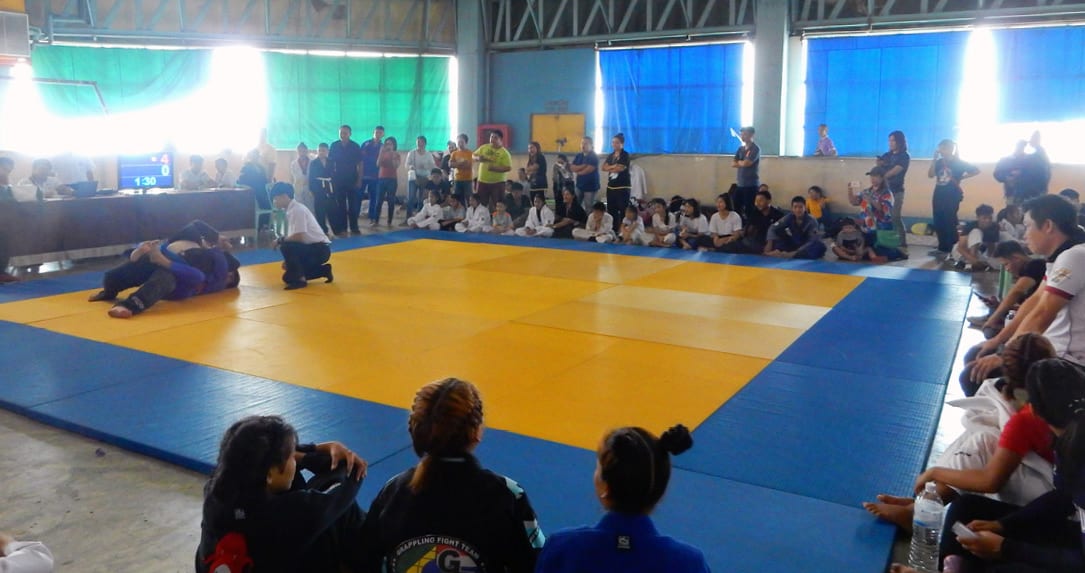
Training at Pure Grappling
Pure Grappling (BJJ Globetrotters affiliated!) became my home gym while in Chiang Mai, where I trained 6x/week in the evenings. It’s actually run by a group based out of Singapore with no permanent full-time instructor at the location in Chiang Mai. Instructors from the group in Singapore take turns living and working here, for something like 4-5 months at a time. The instructor while I was here was Charlie (Carlos Alcayaga), a brown belt from Argentina.
I had a wonderful time training at Pure Grappling! Class was given in English, with students being a mix of expats and local residents. This gym frequently received single-time drop in tourist visitors too. Because a big majority of the class was lower-belts, a lot of the material we covered was the important fundamentals, which I feel like I can always use more of. Charlie’s classes were very clear and well-organized. There was strong emphasis on detail and strong continuity from one class to the other, with technique building upon what was previously learned in the days and weeks before. We spent a lot of time drilling and fine-tuning the same movements, which resulted in those becoming much more smooth and intuitive toward the end of the month.
The gym was small but was very clean, including two rooms with nice mats and padded walls, a changing room, two bathrooms and a shower. Only the smaller downstairs room included air conditioning, which we used when the class size wasn’t too big. The gym also included quality air filters, making it possible to train even on high pollution days in Chiang Mai.


Training at Chiang Mai BJJ
The other gym I had the opportunity to visit (for a single time drop-in) was Chiang Mai BJJ. The students and instructor were very welcoming, technique very clear and detail-oriented, and I had some nice rolls there!




